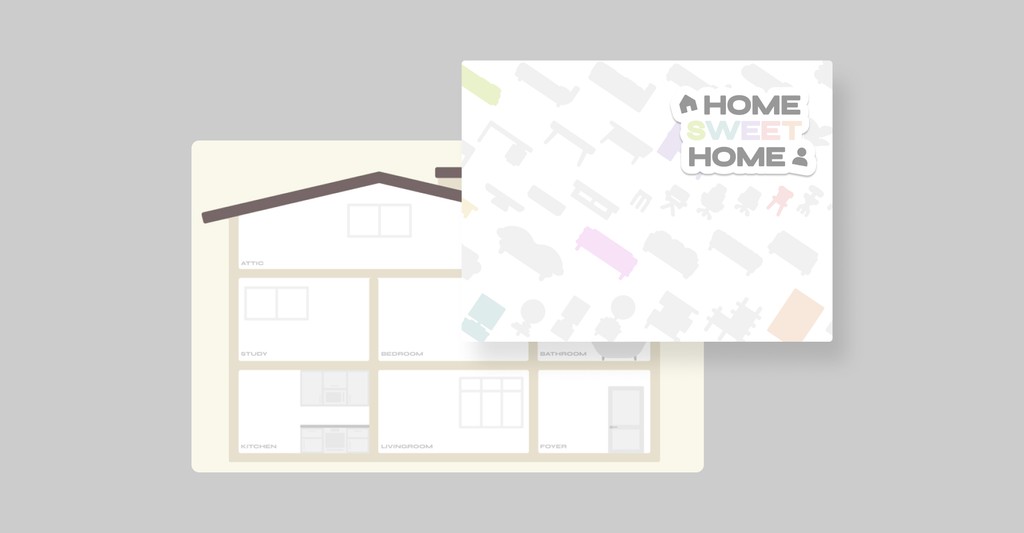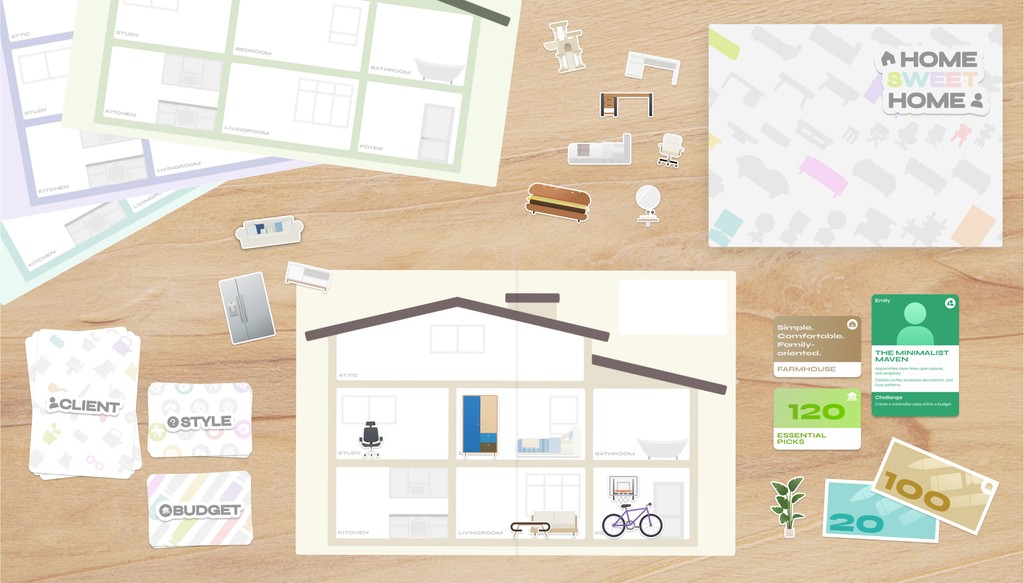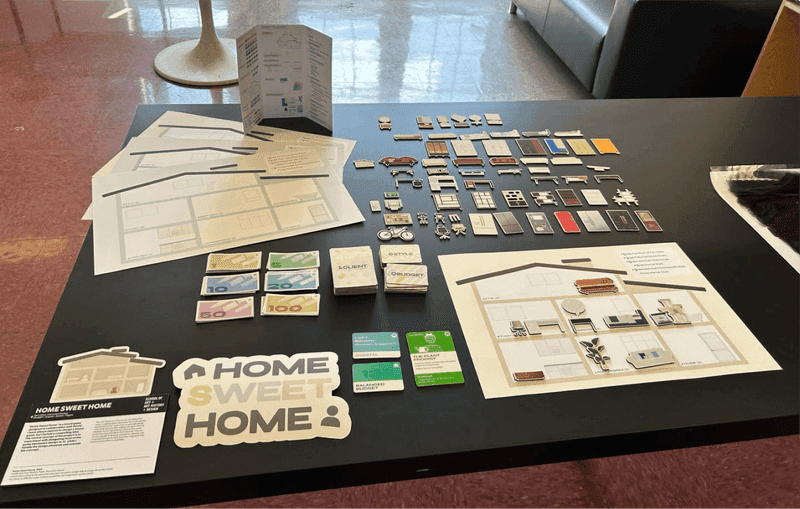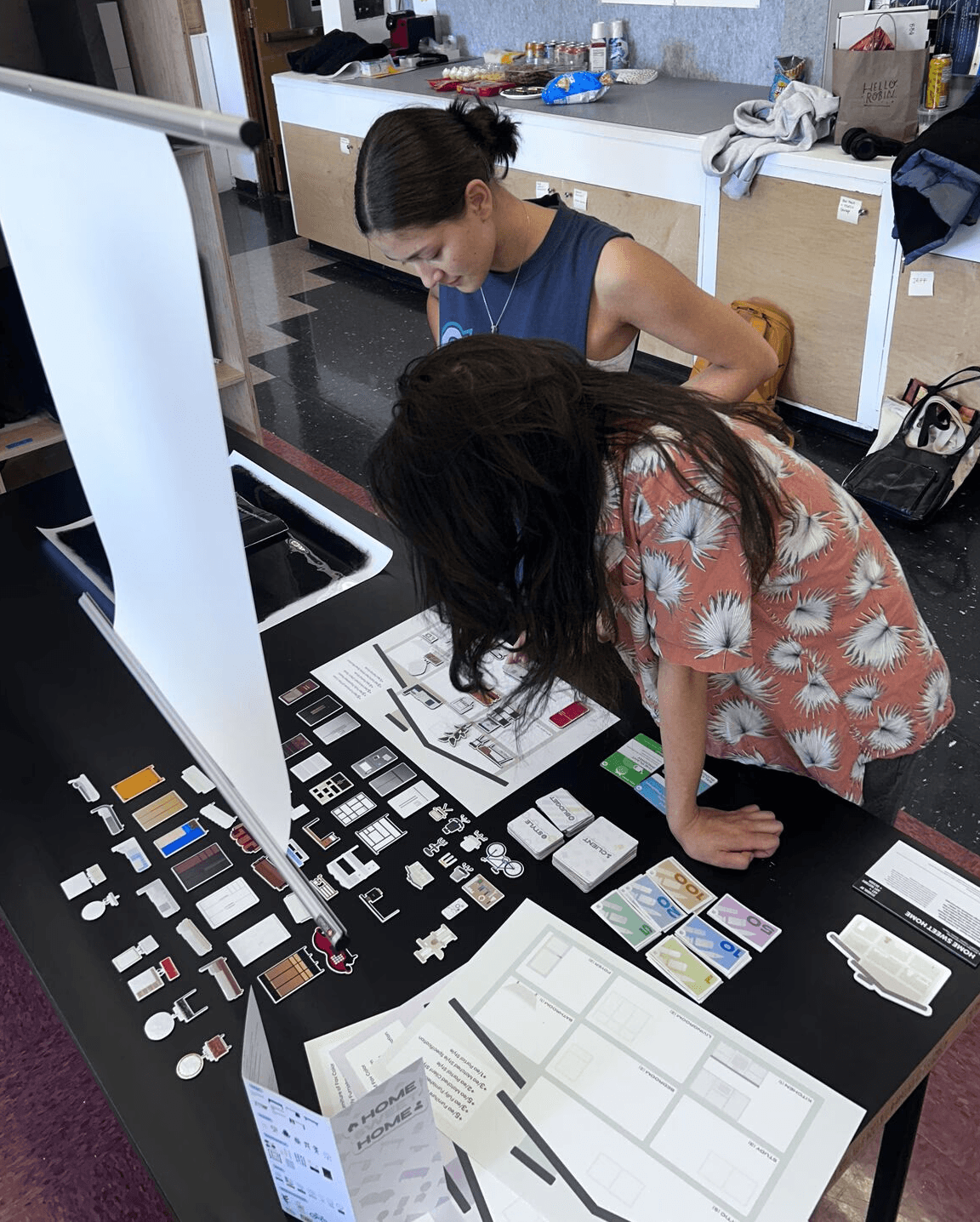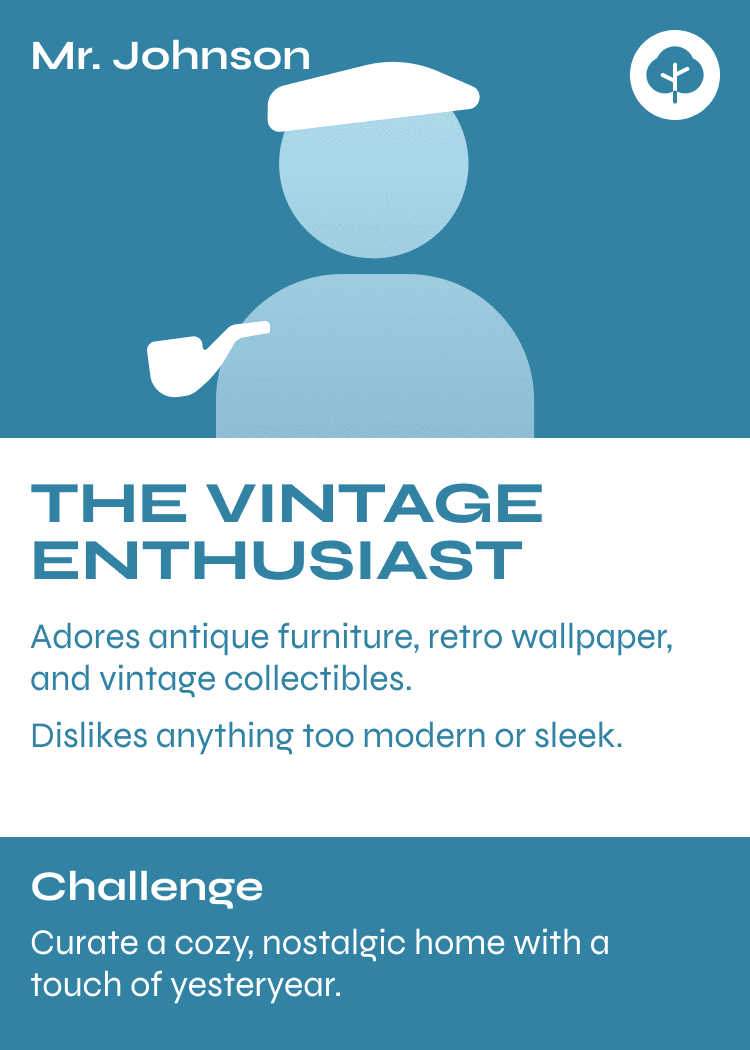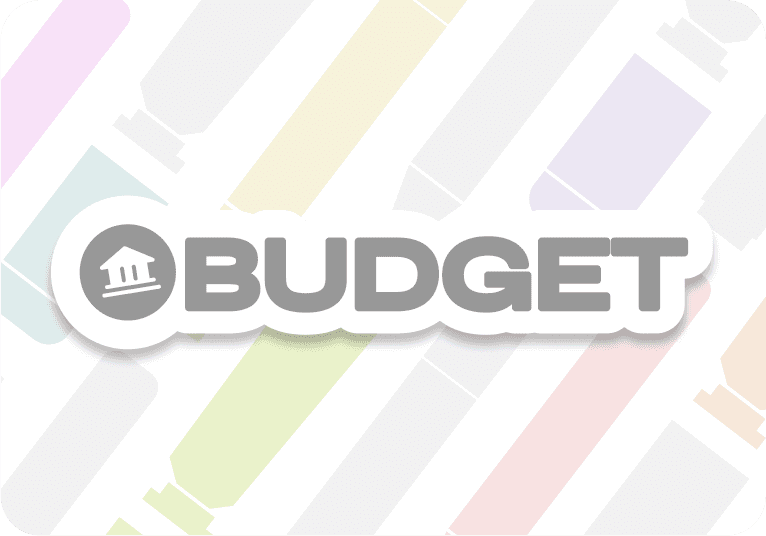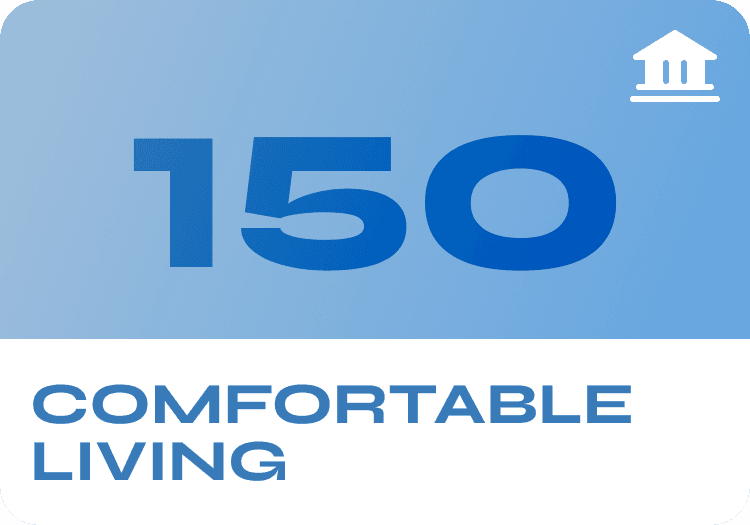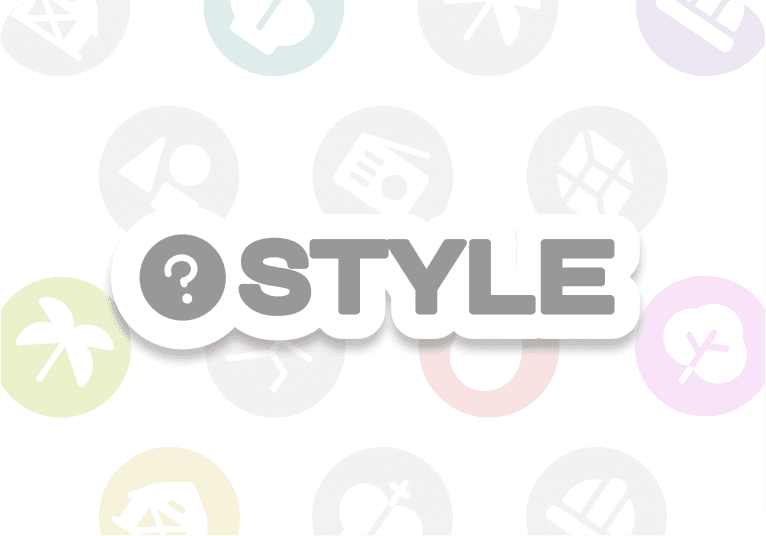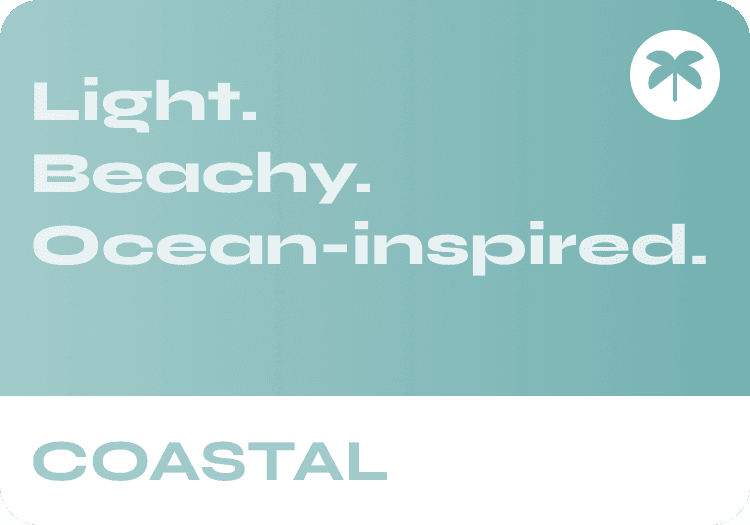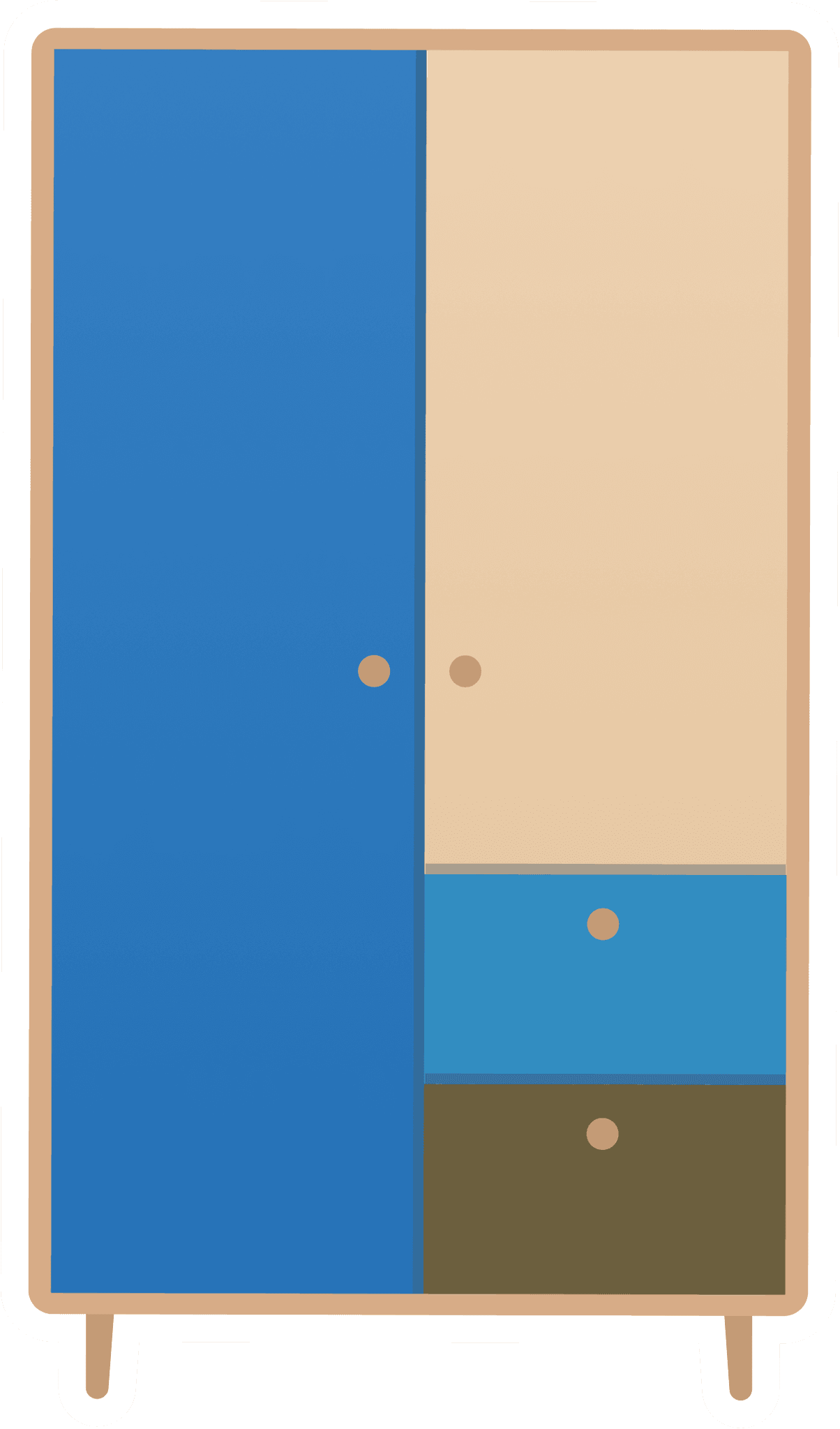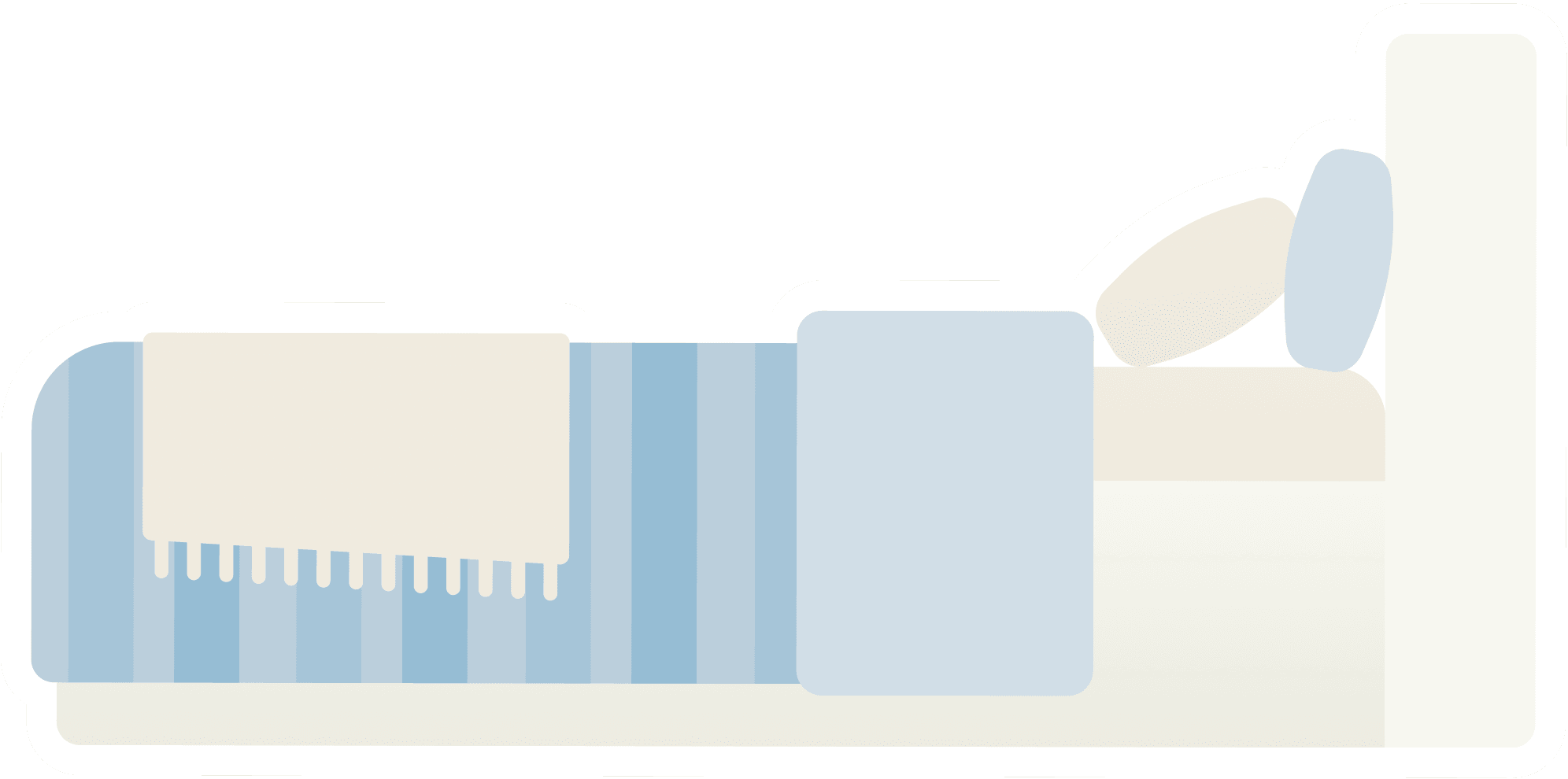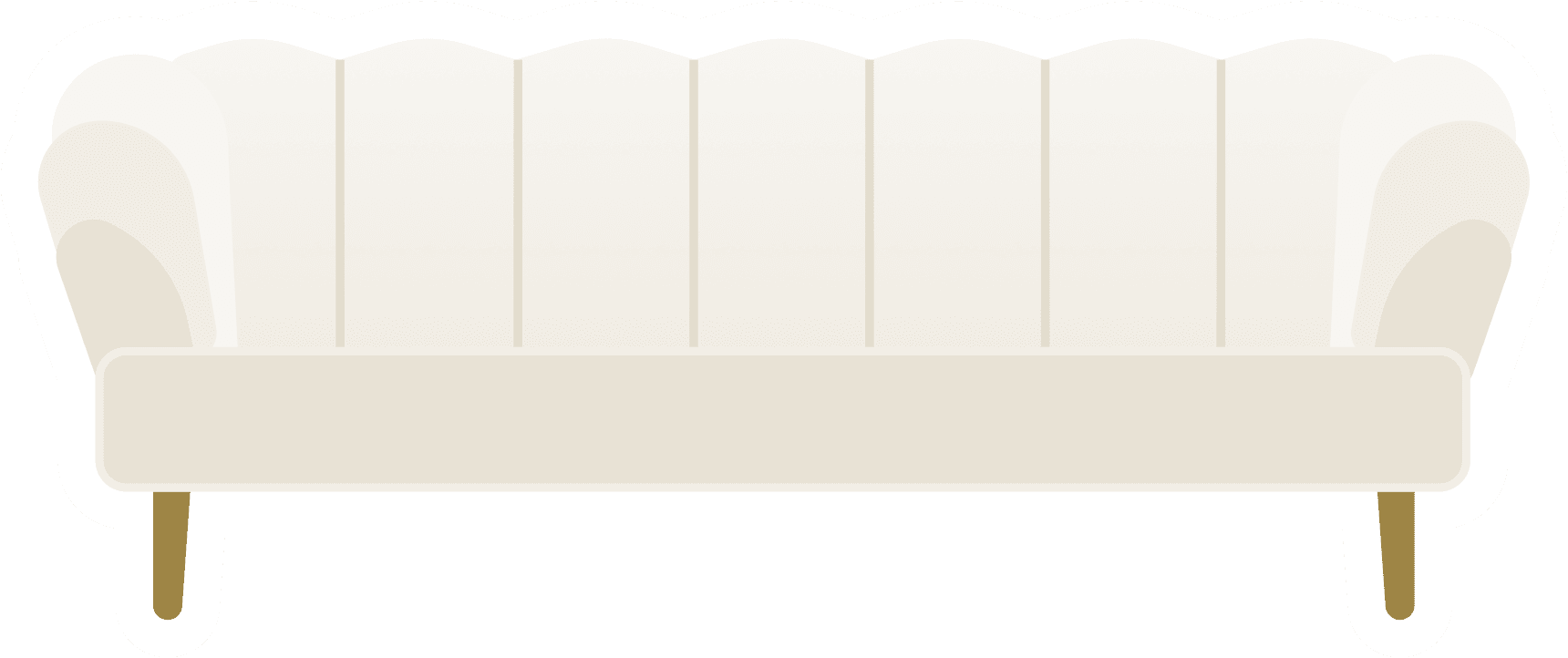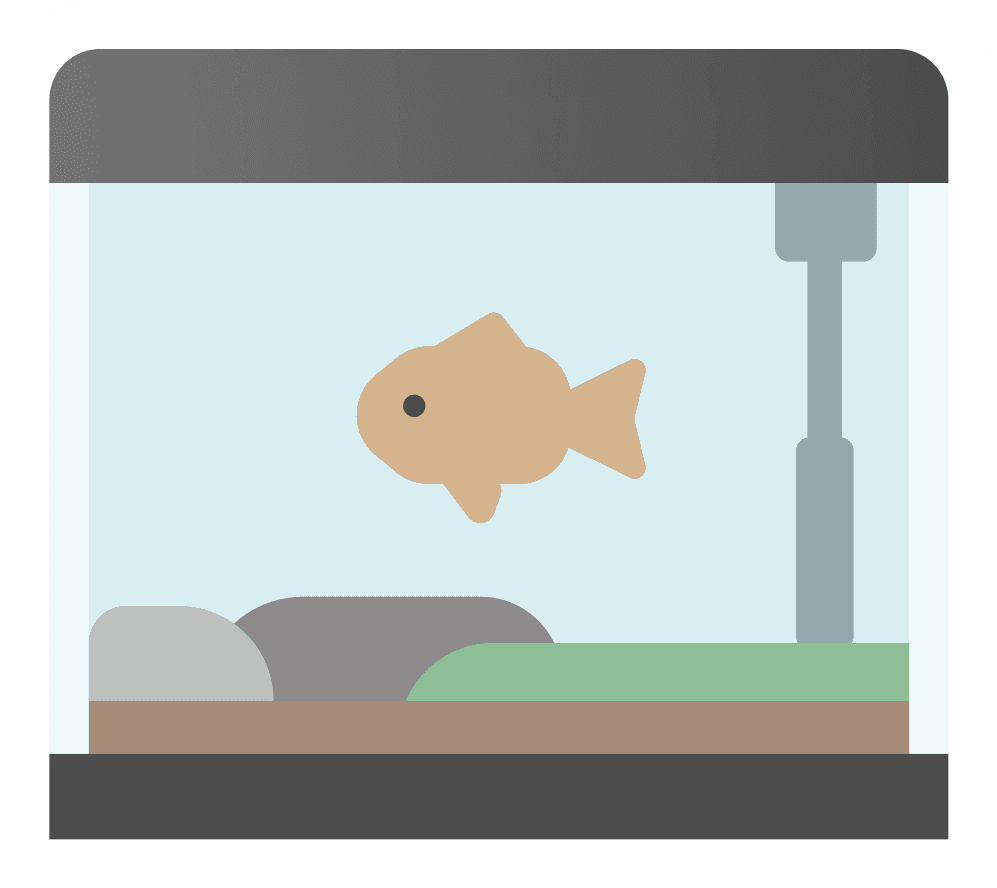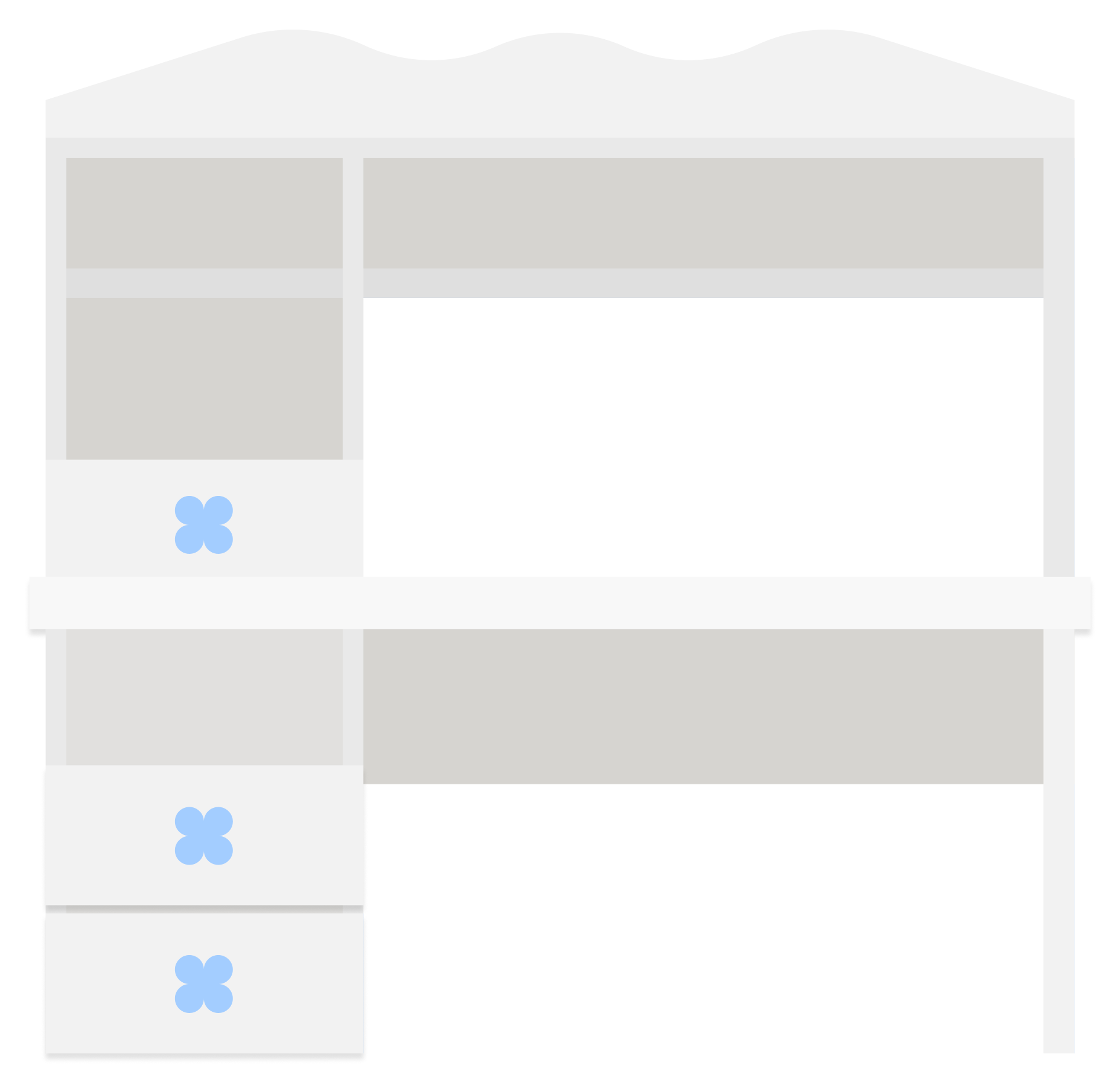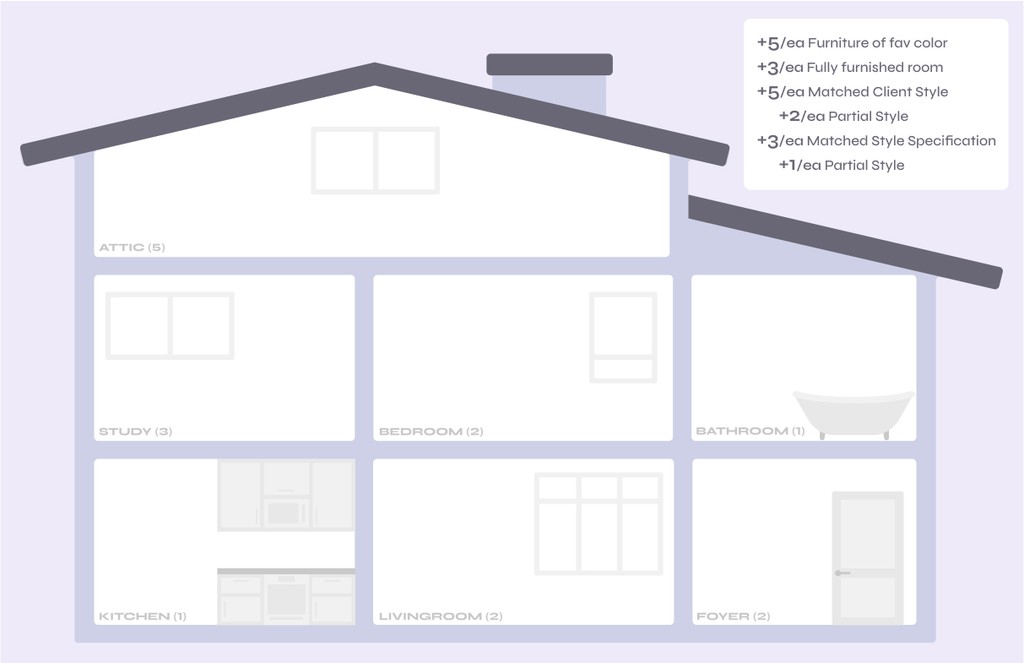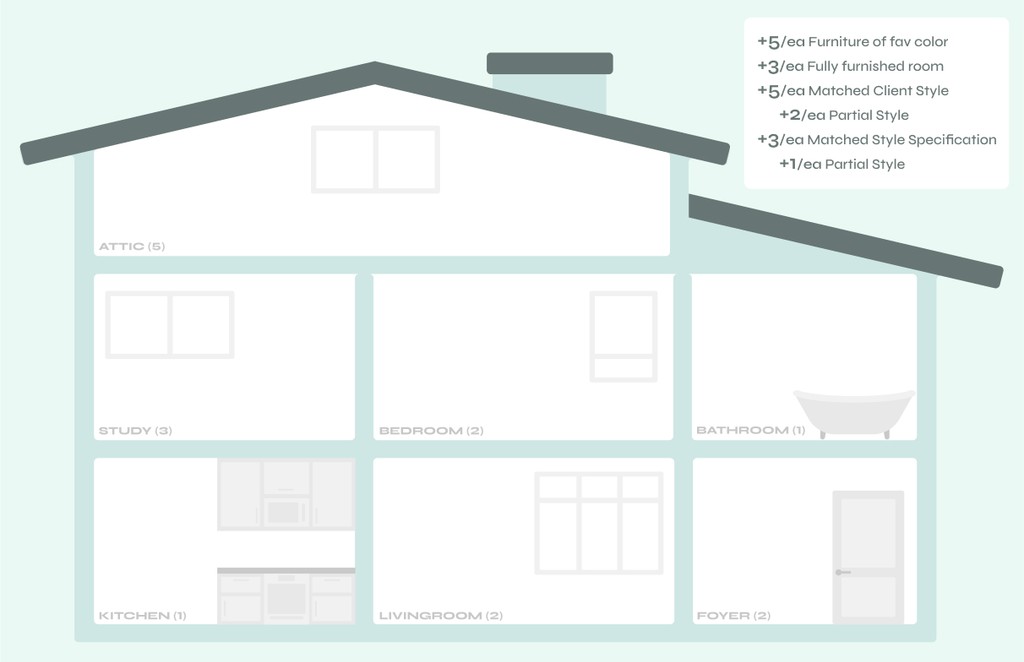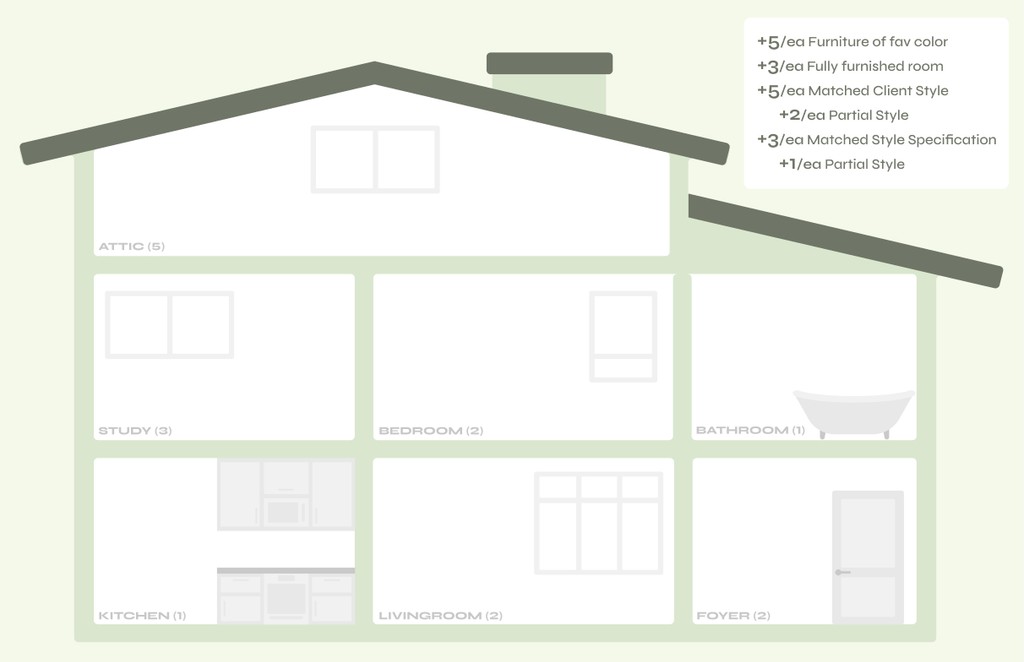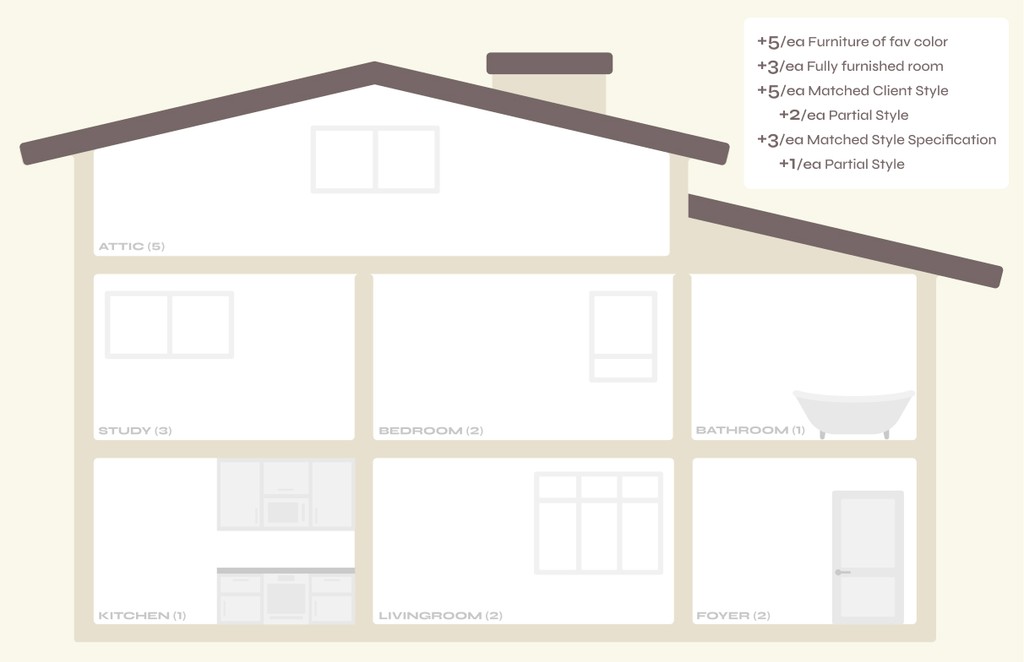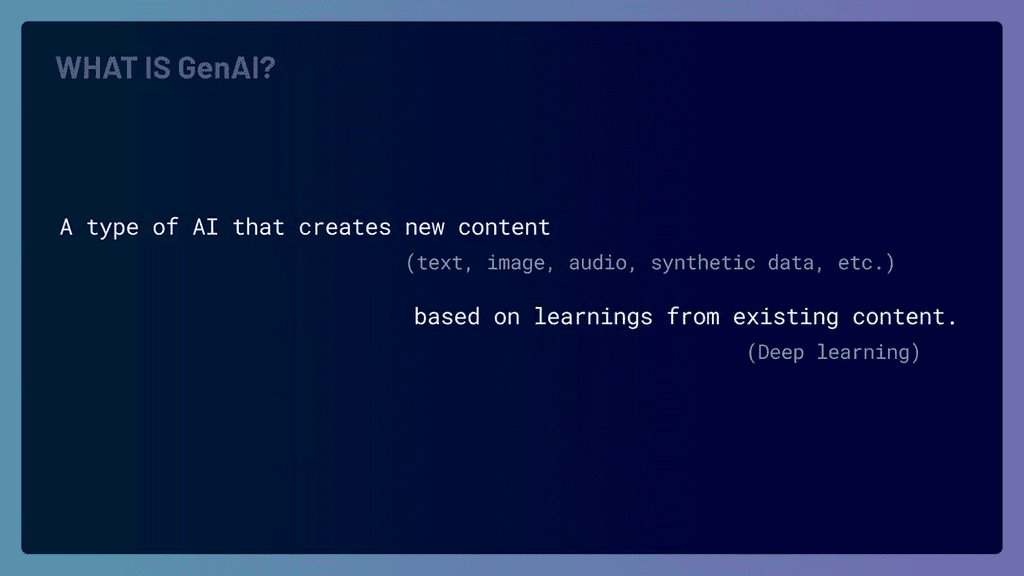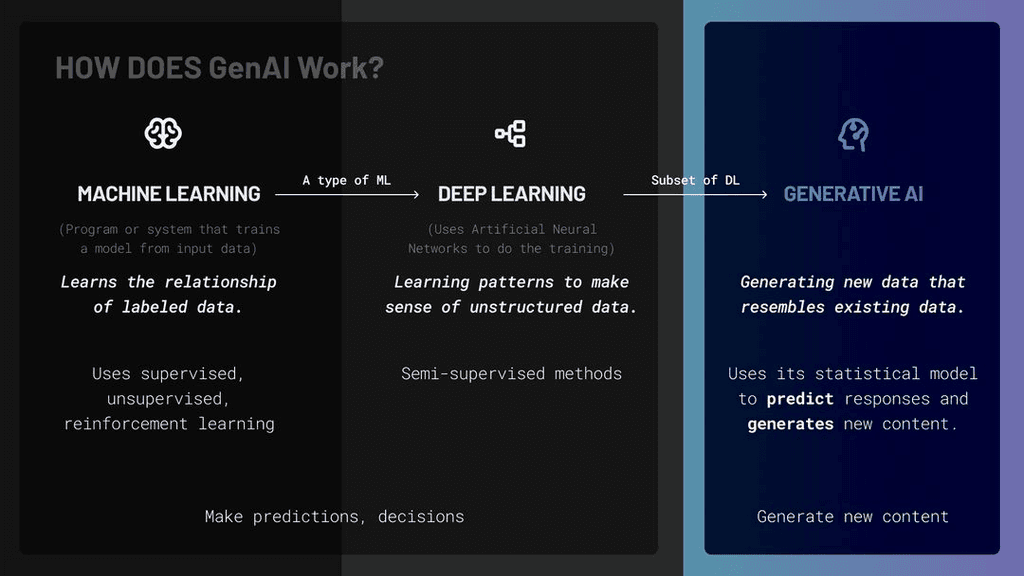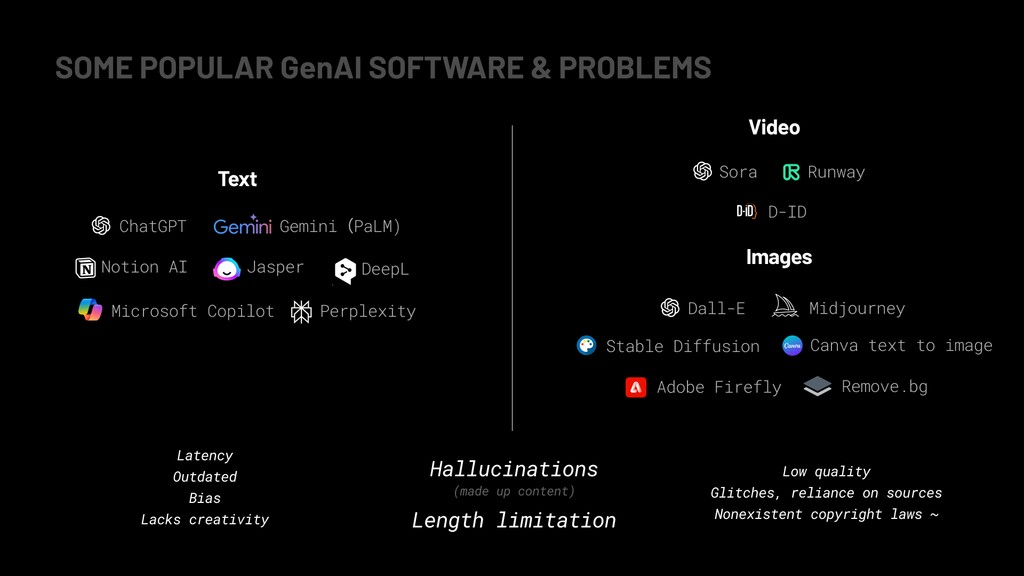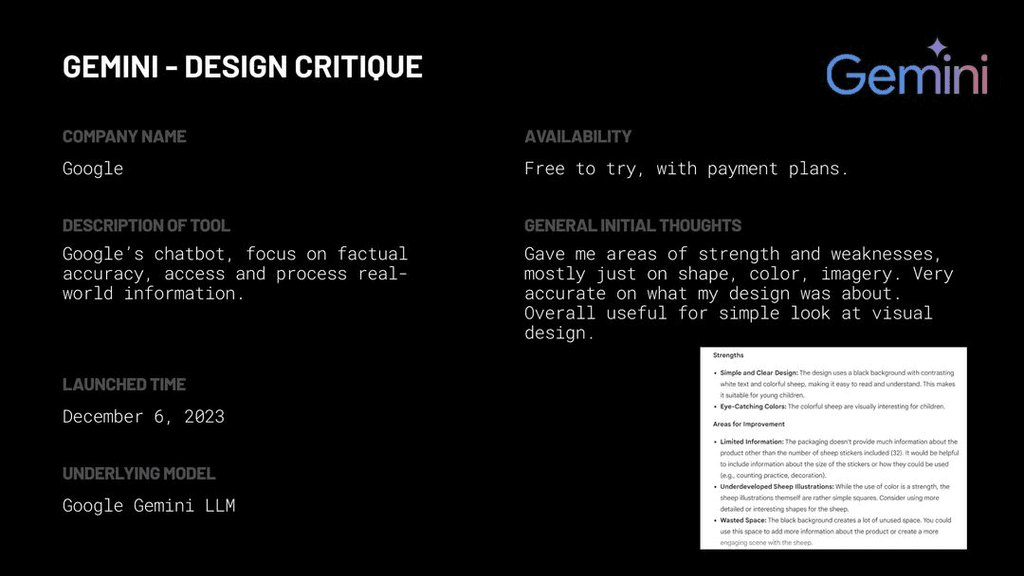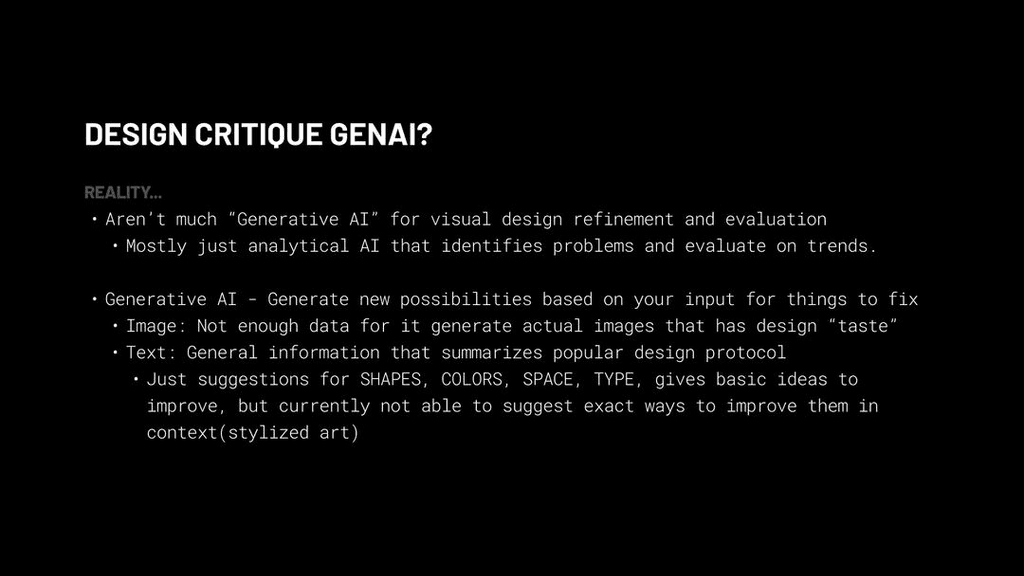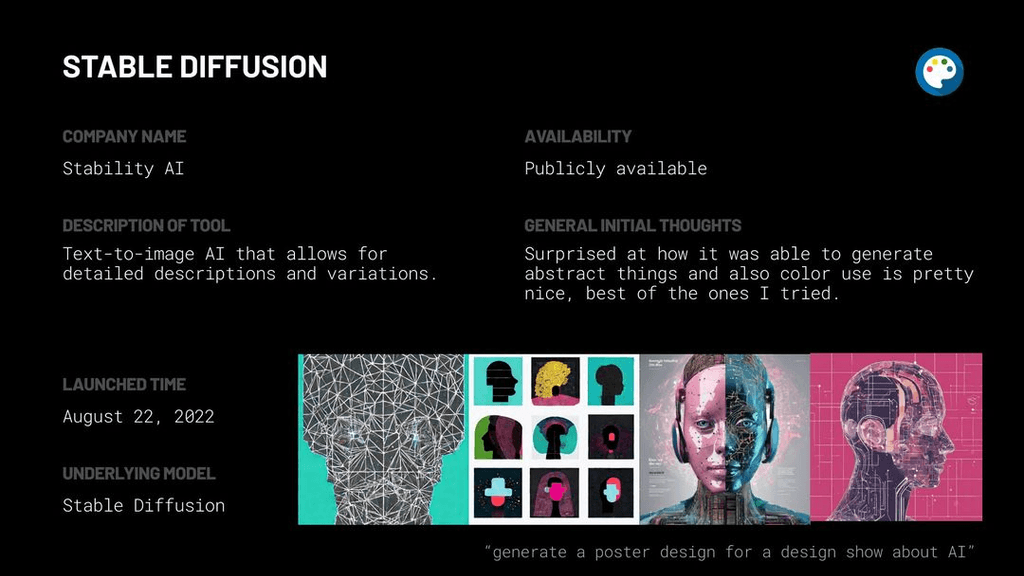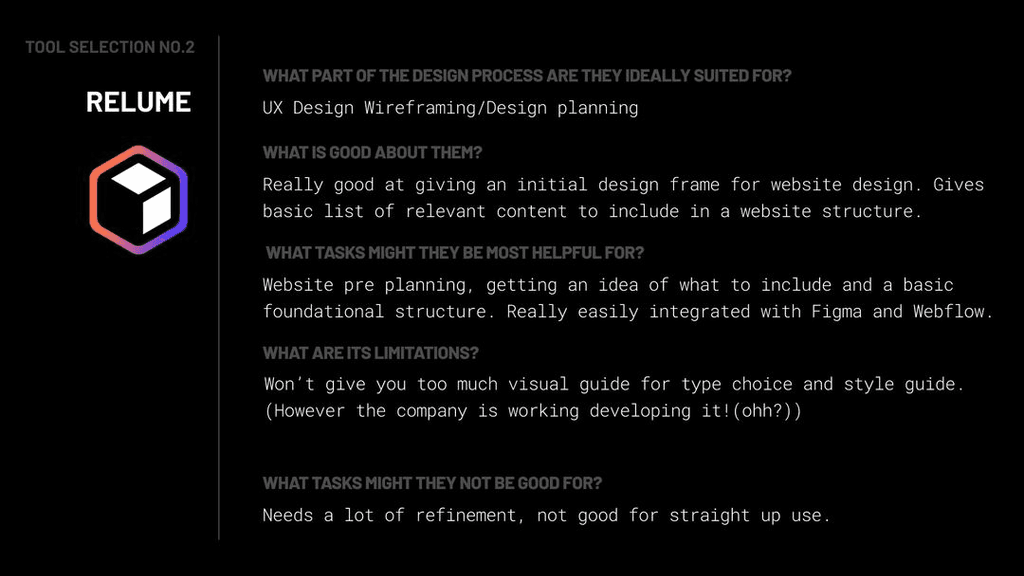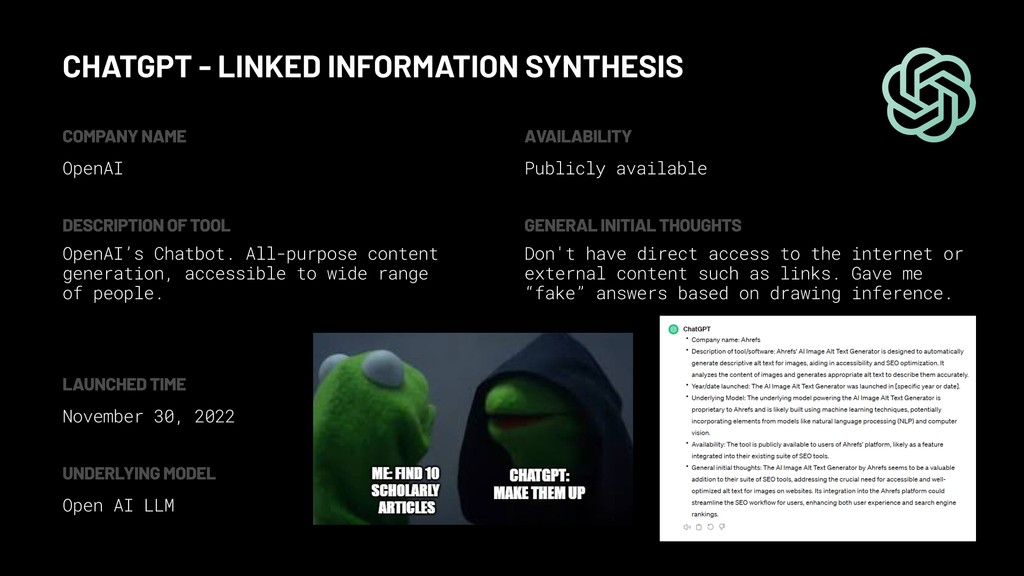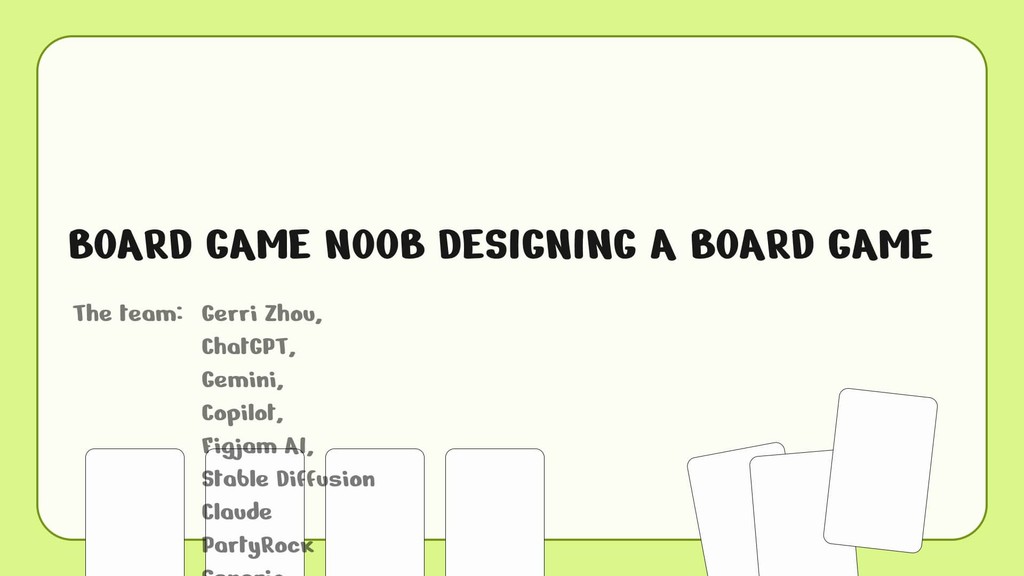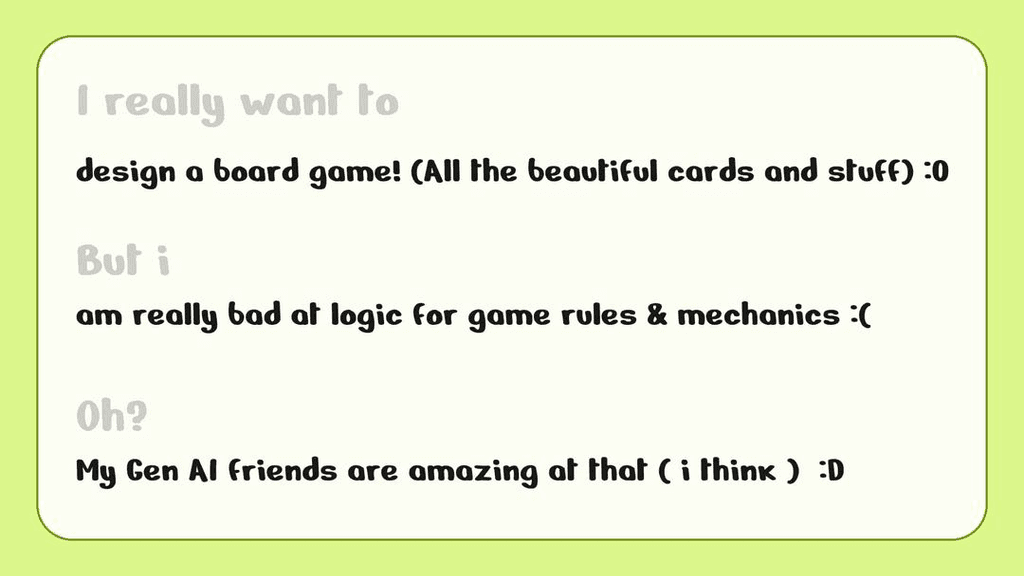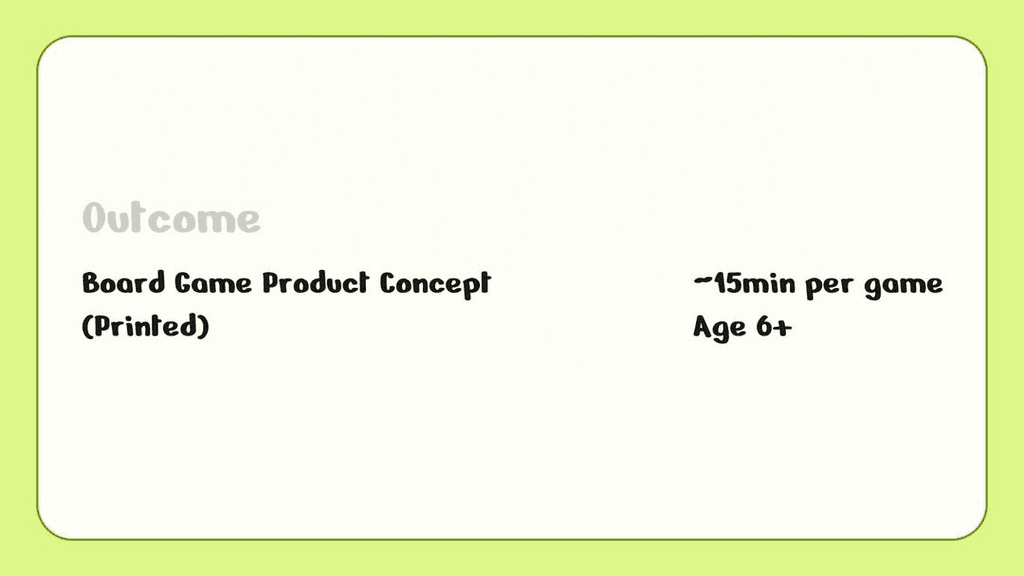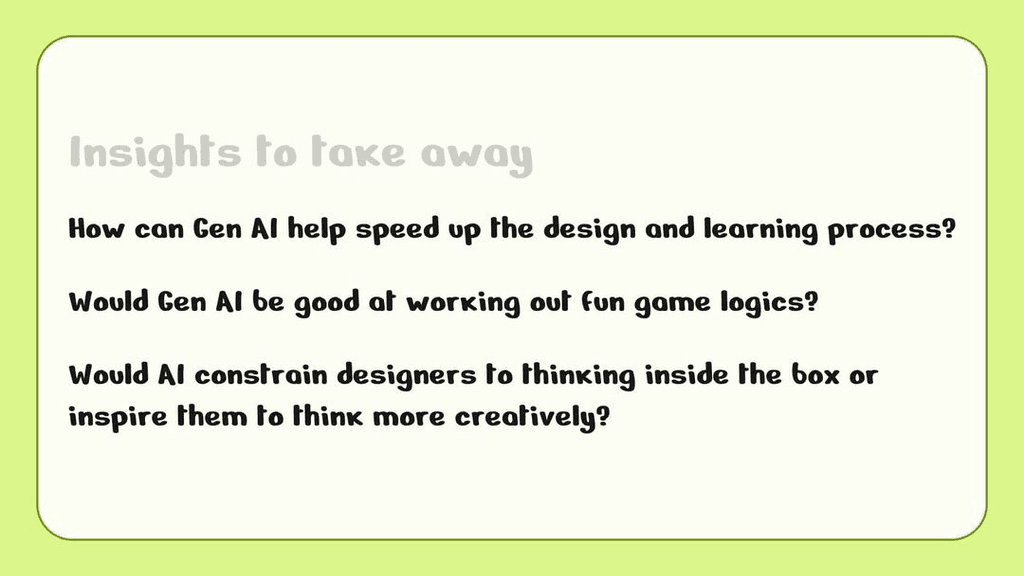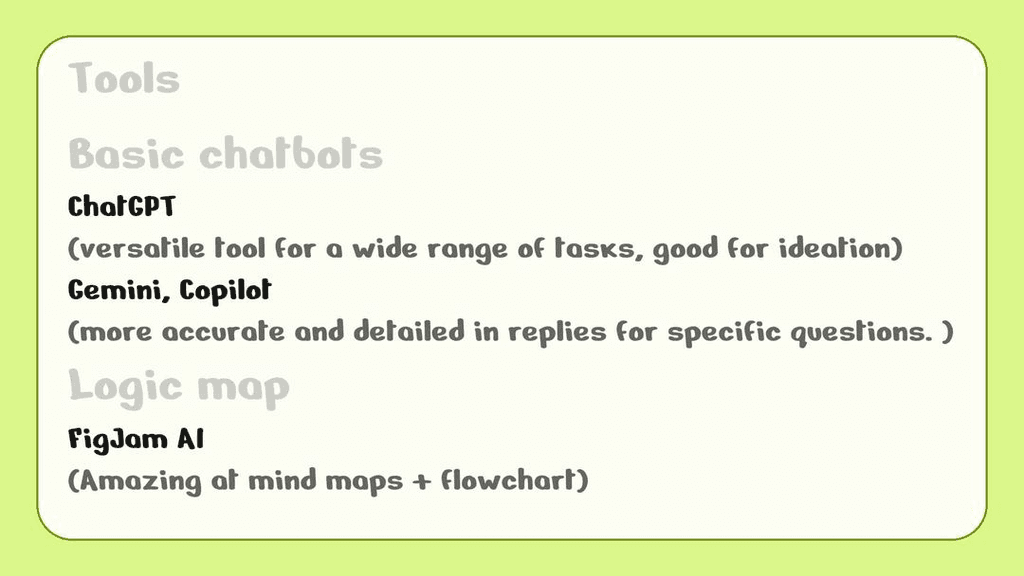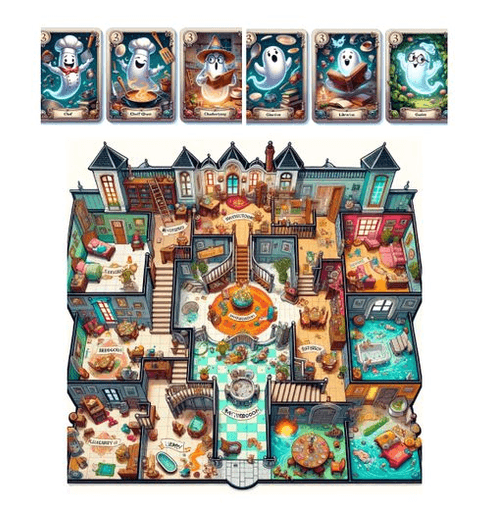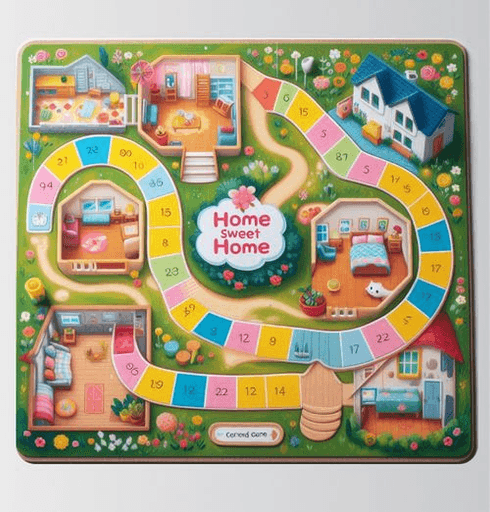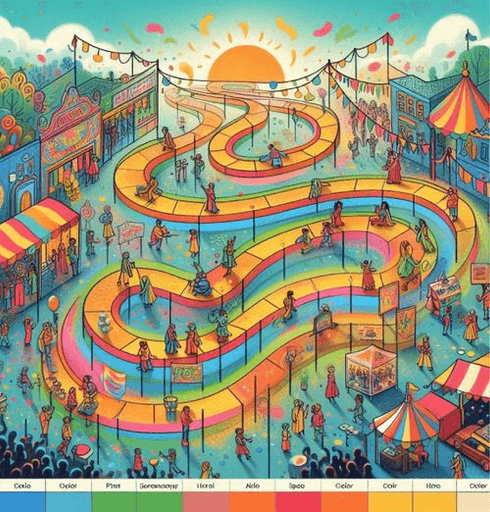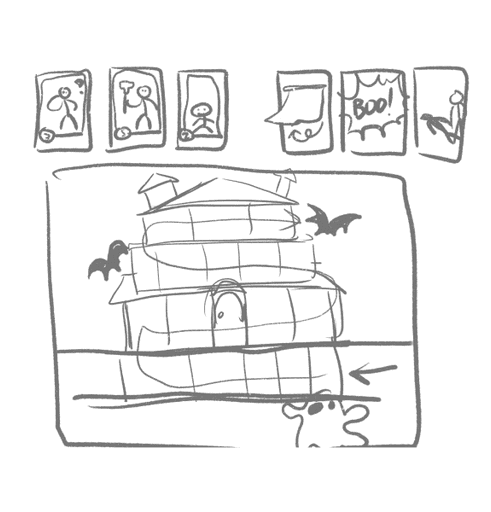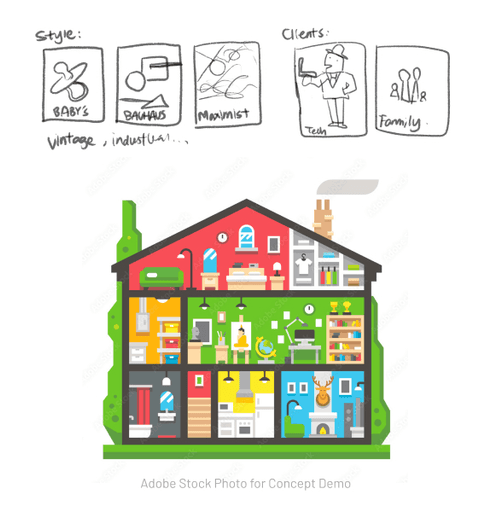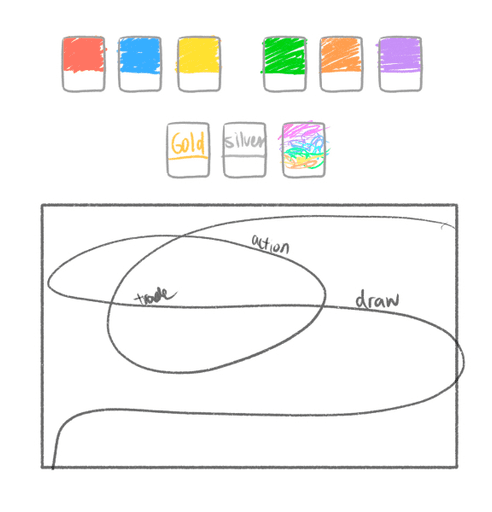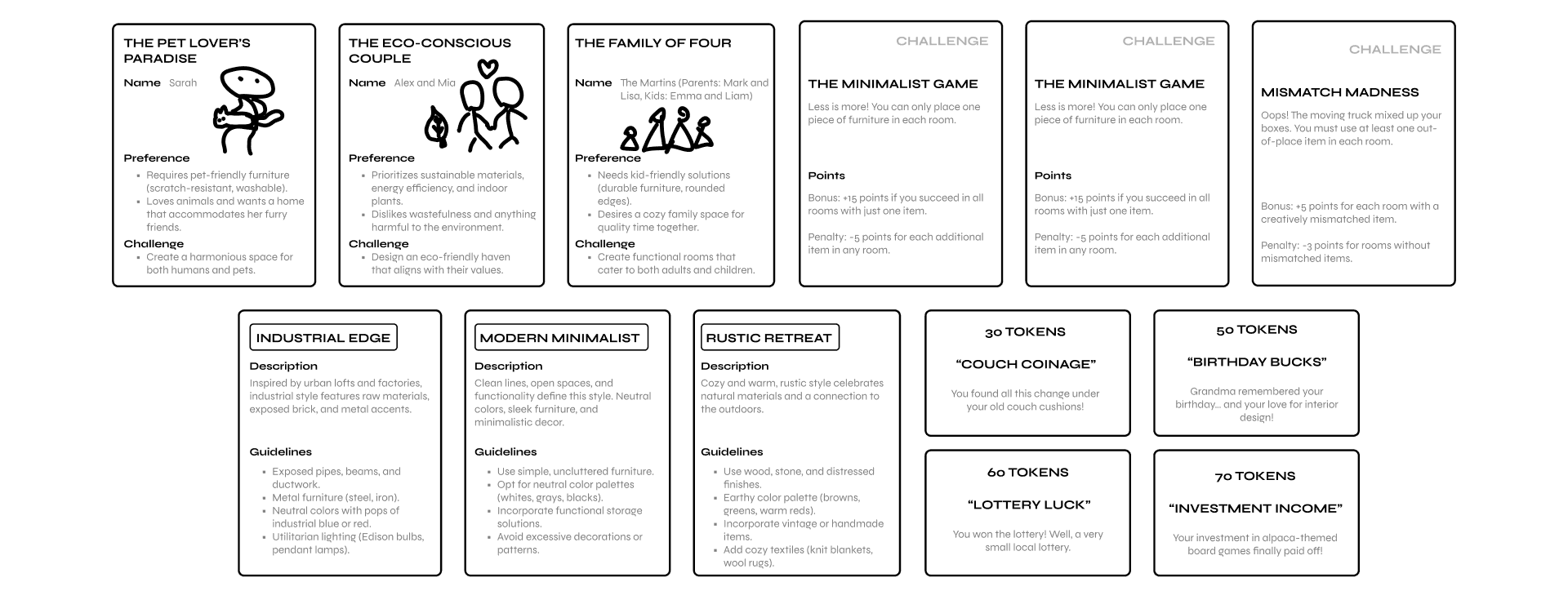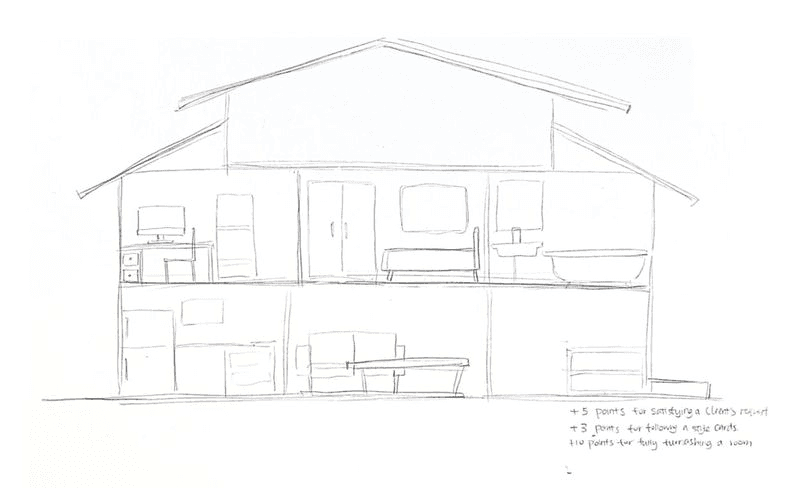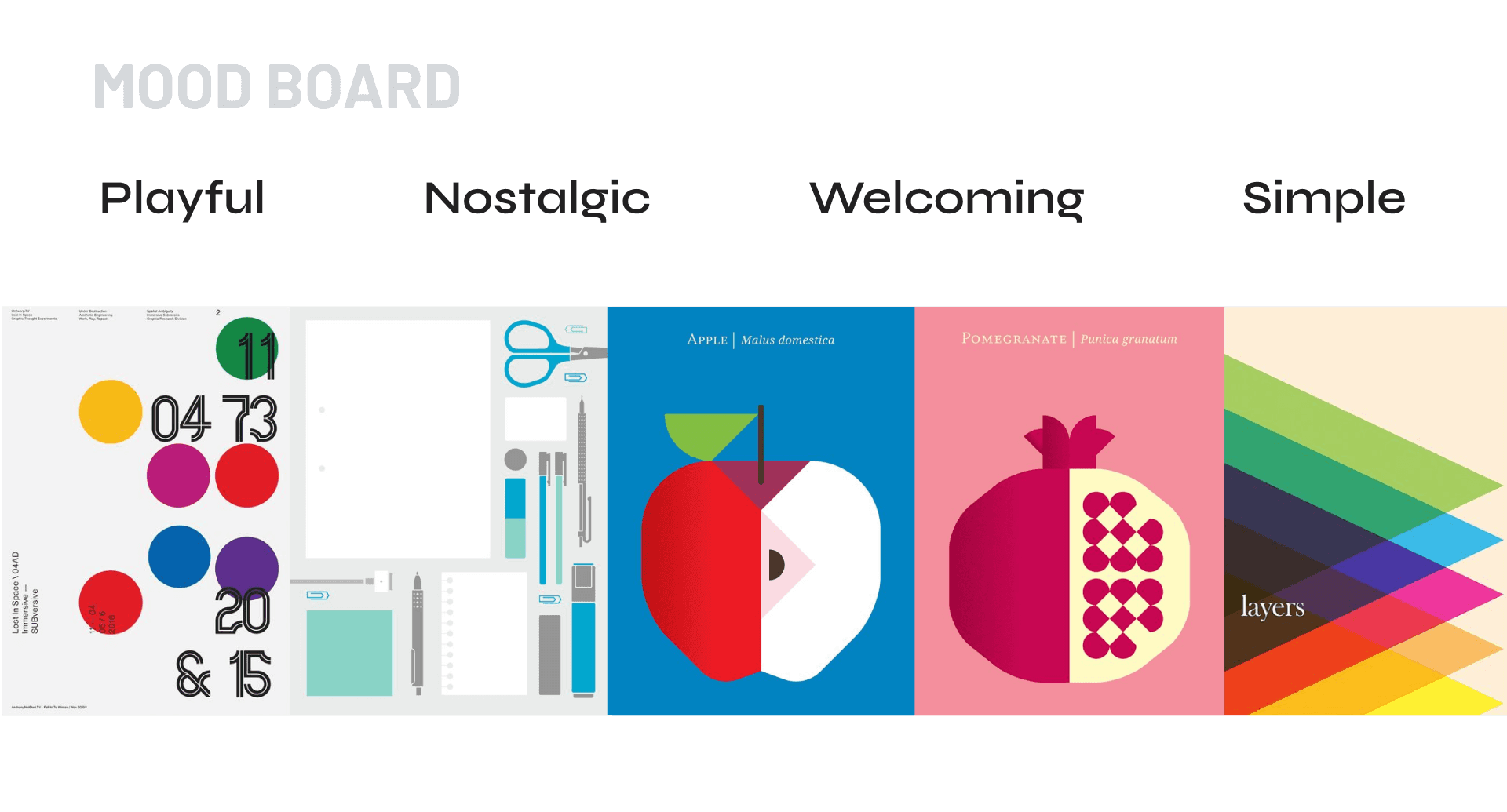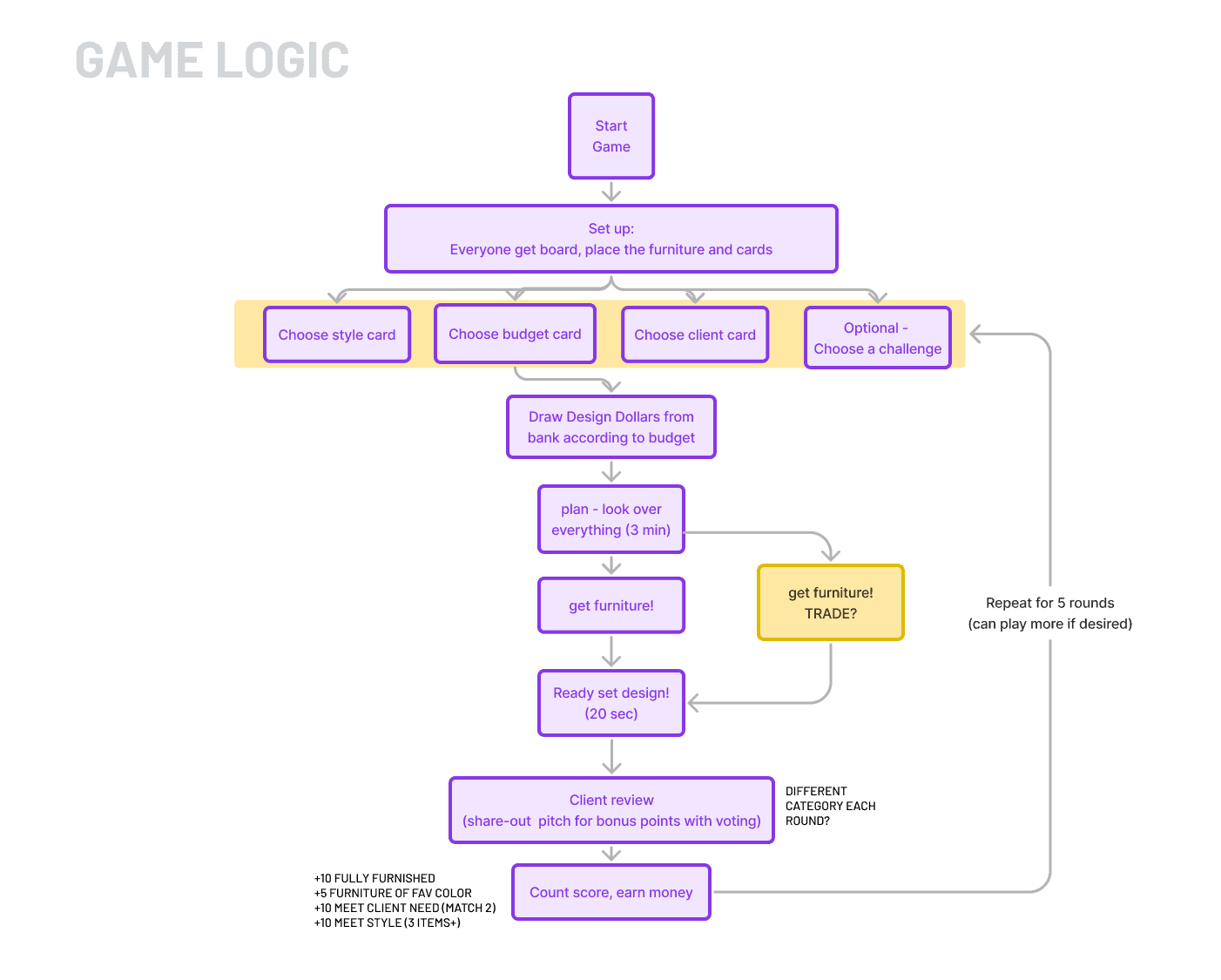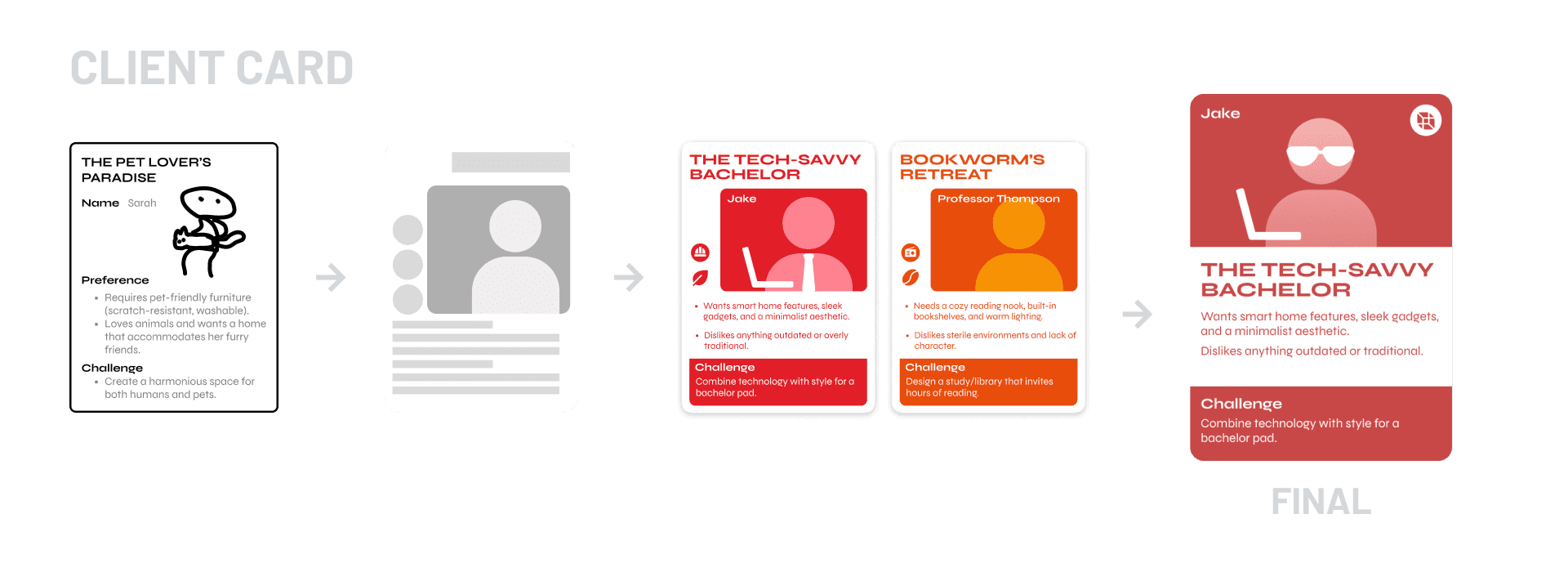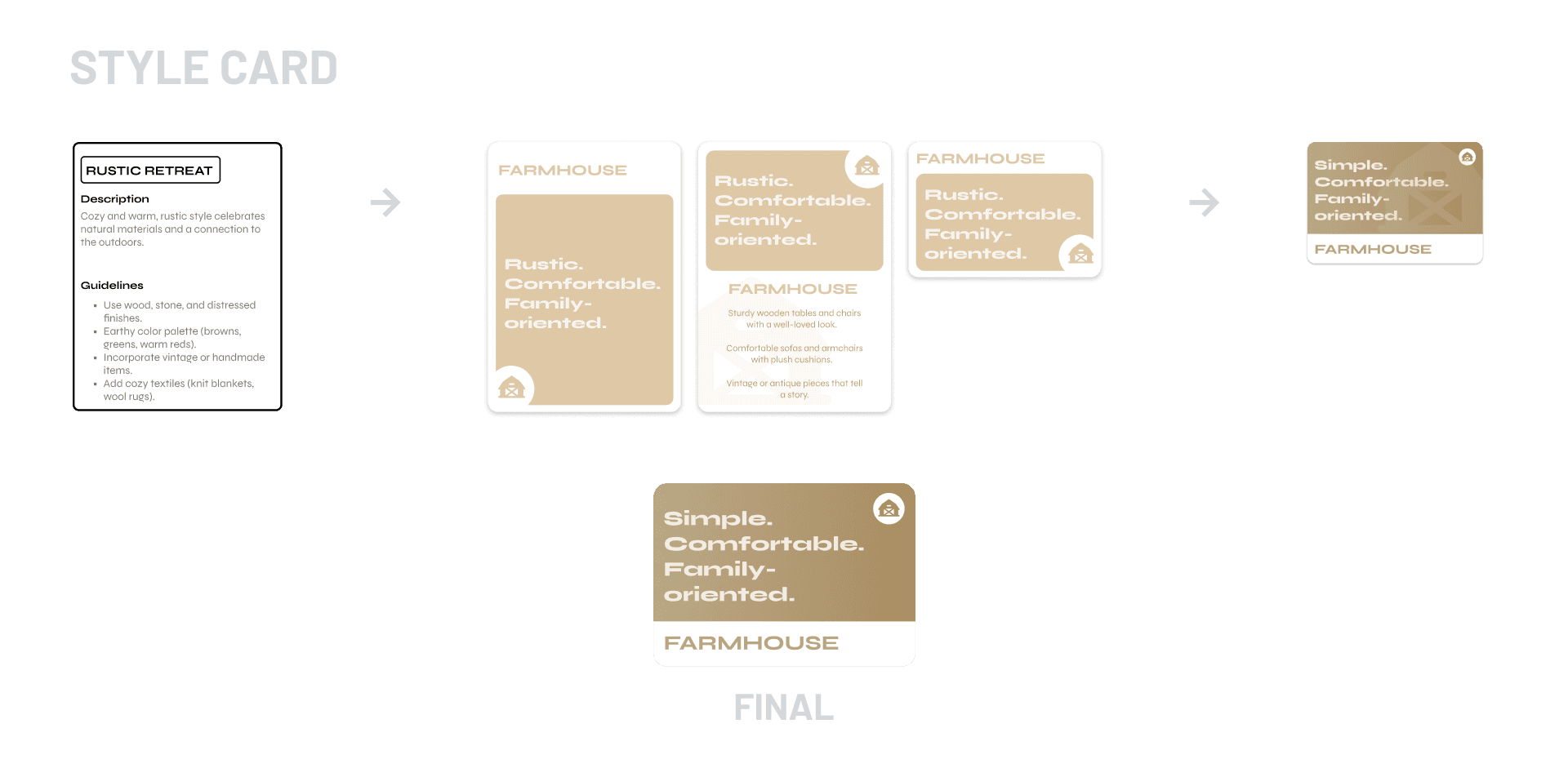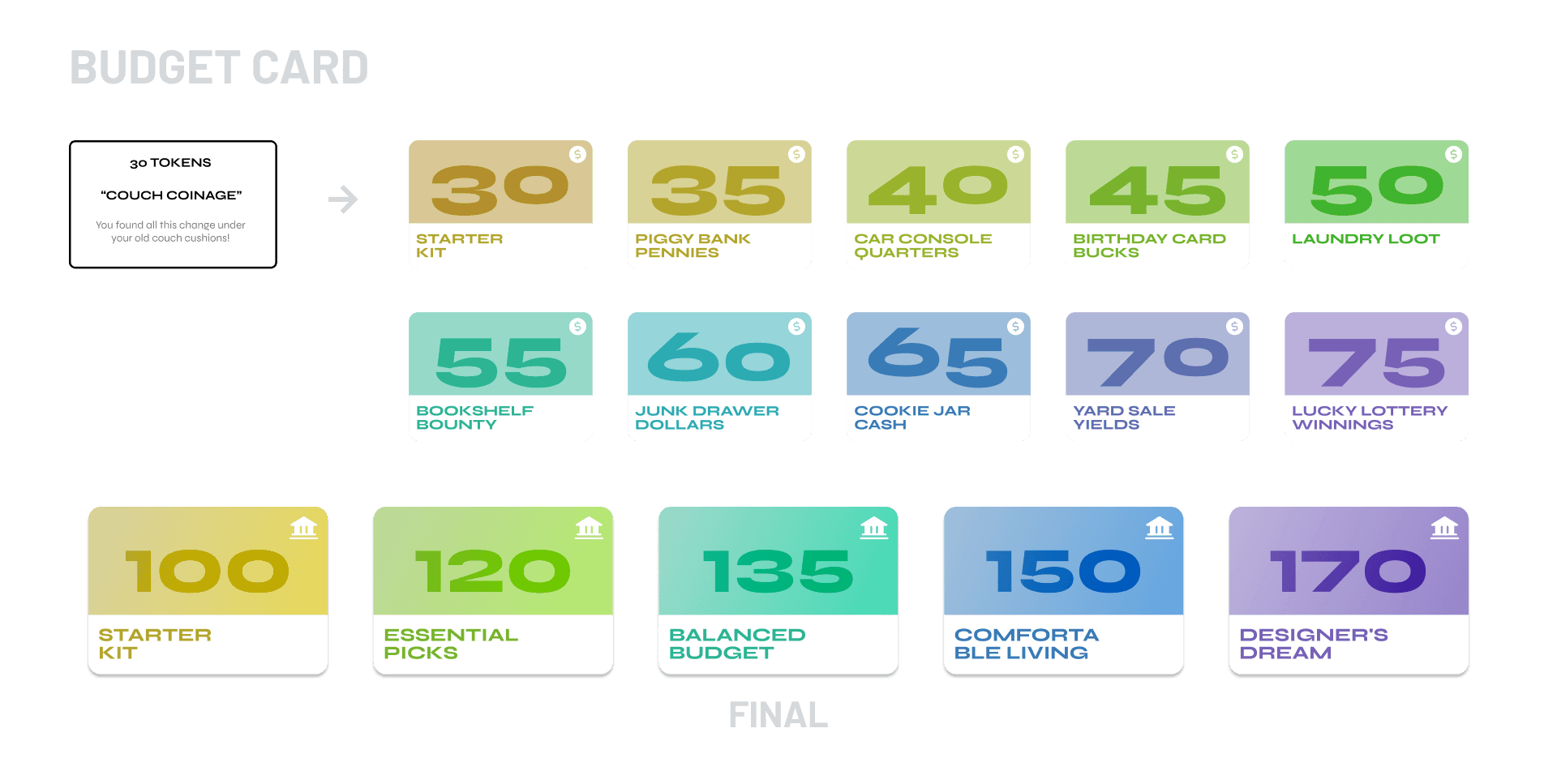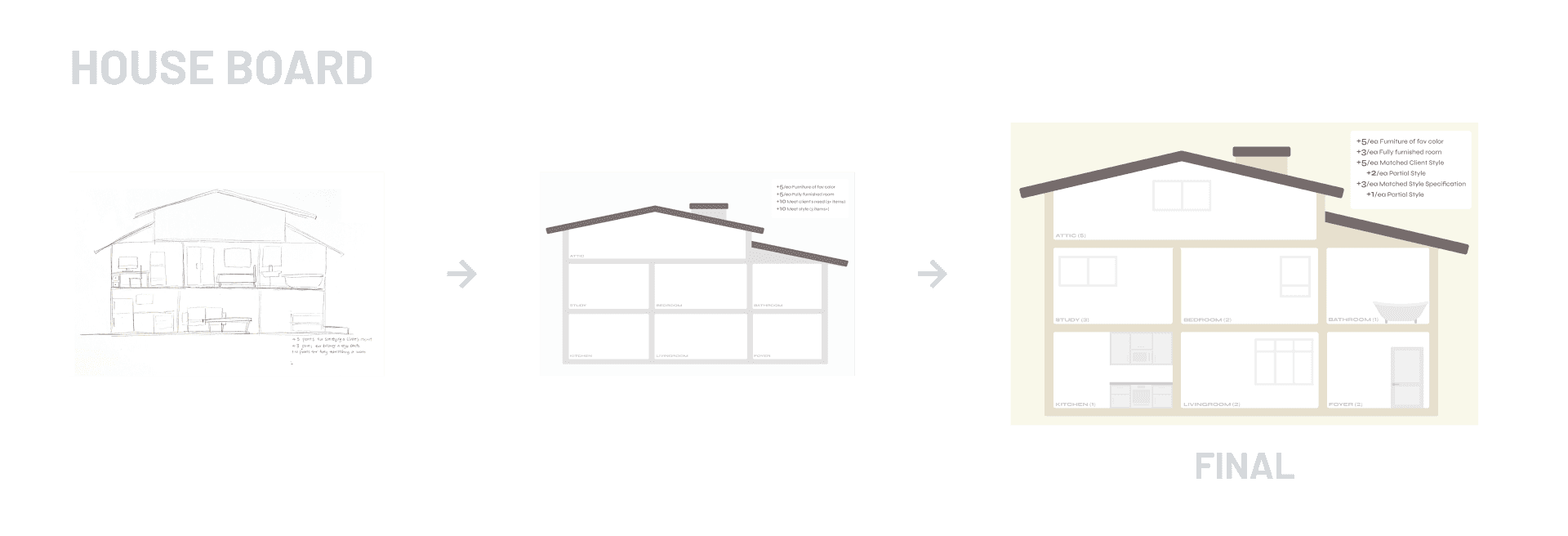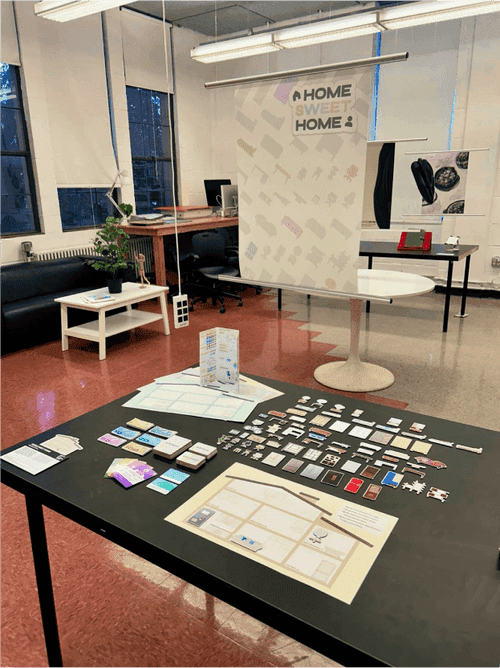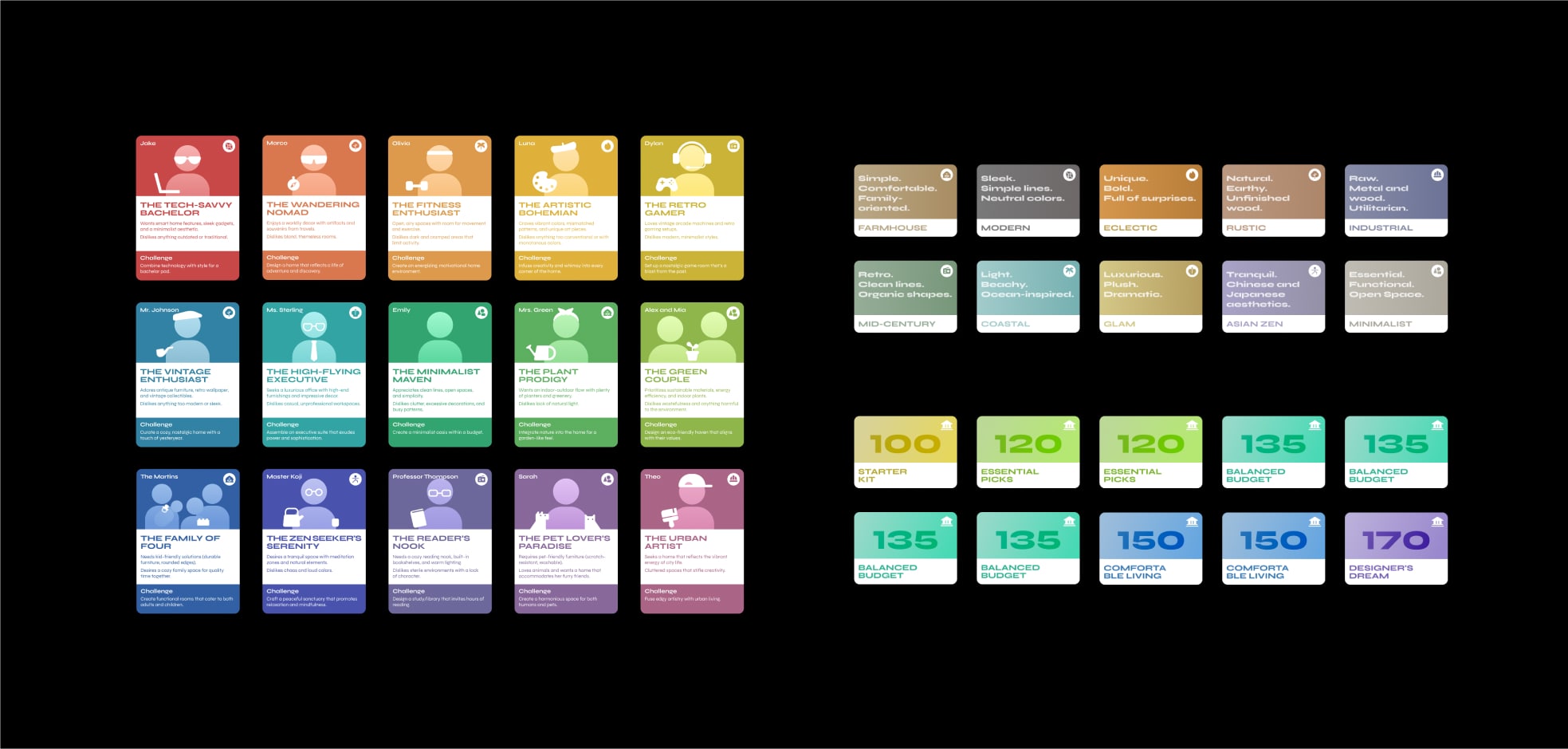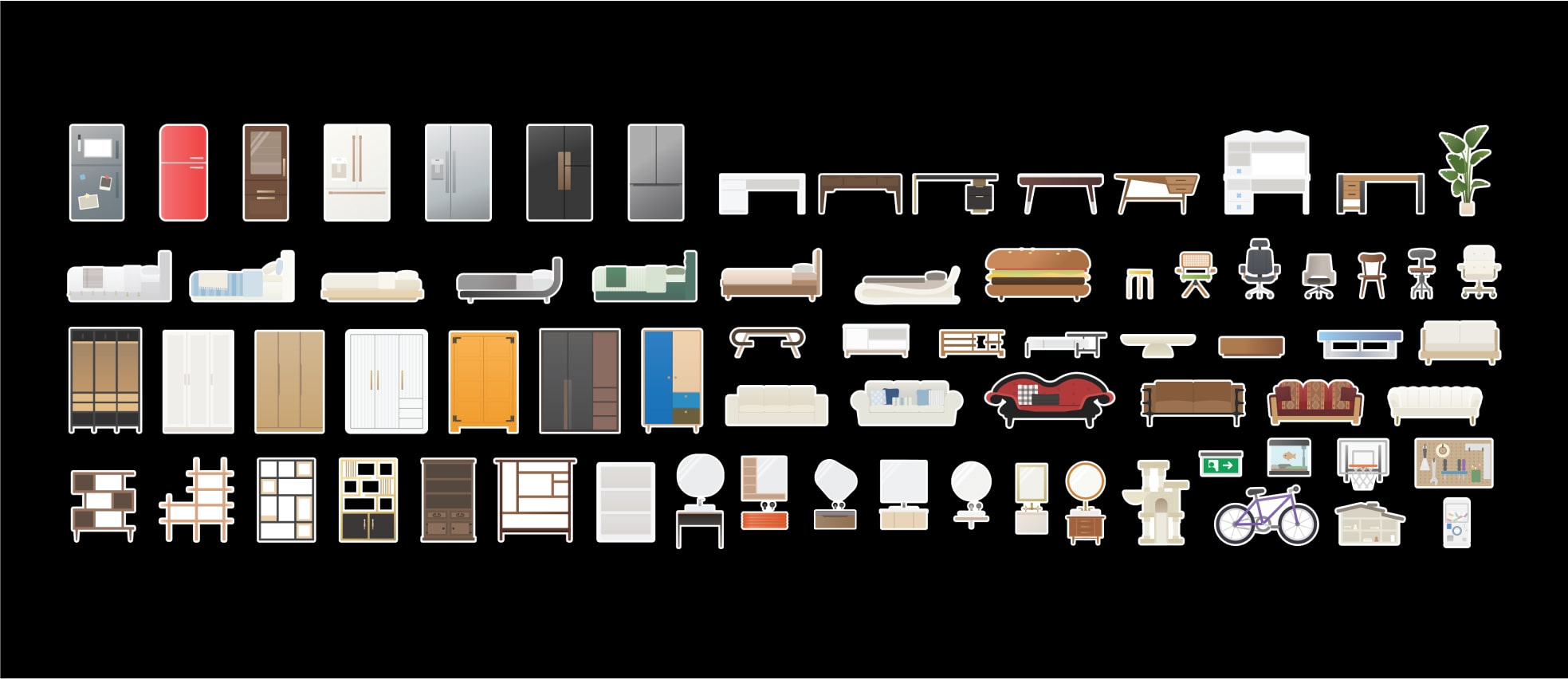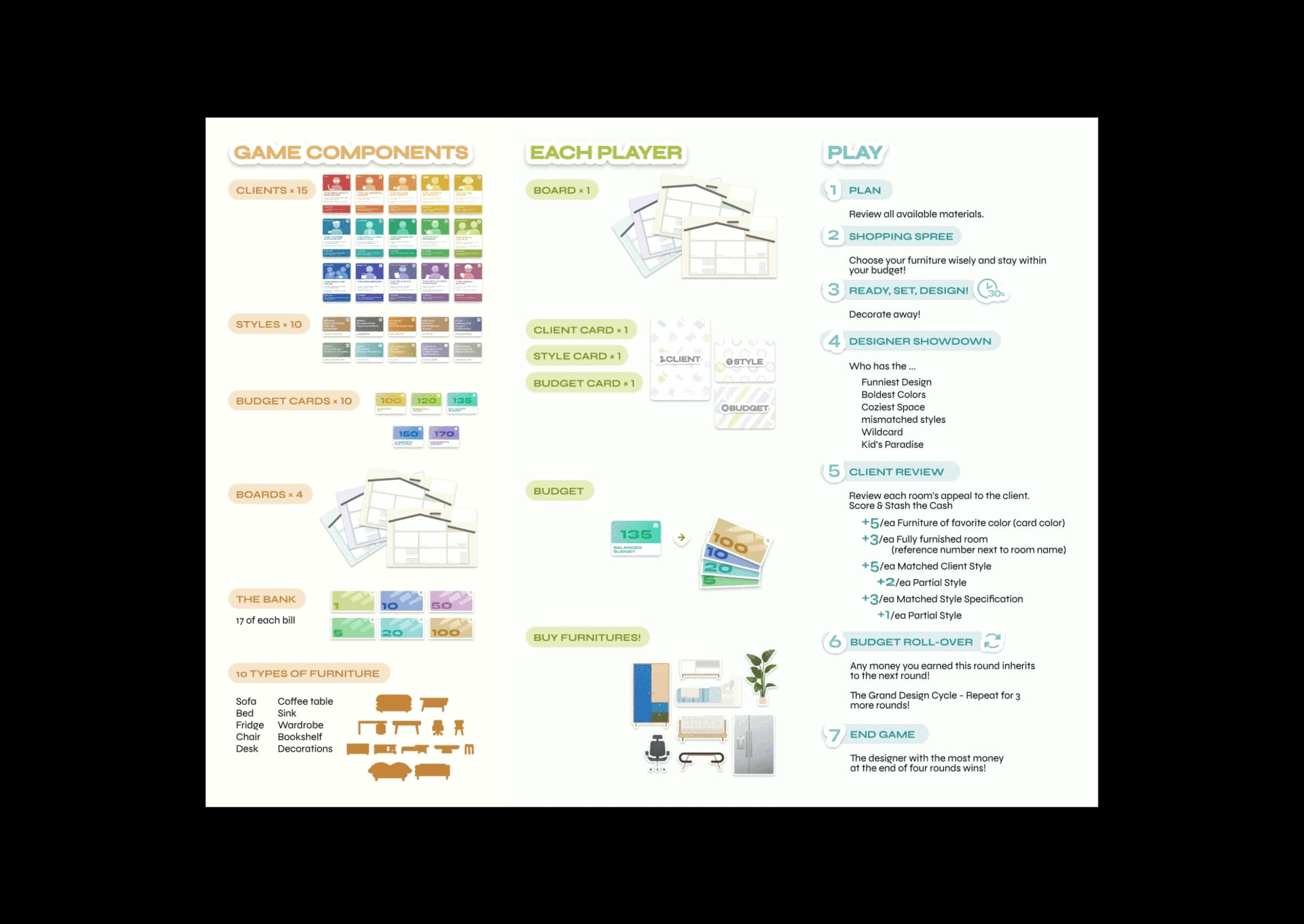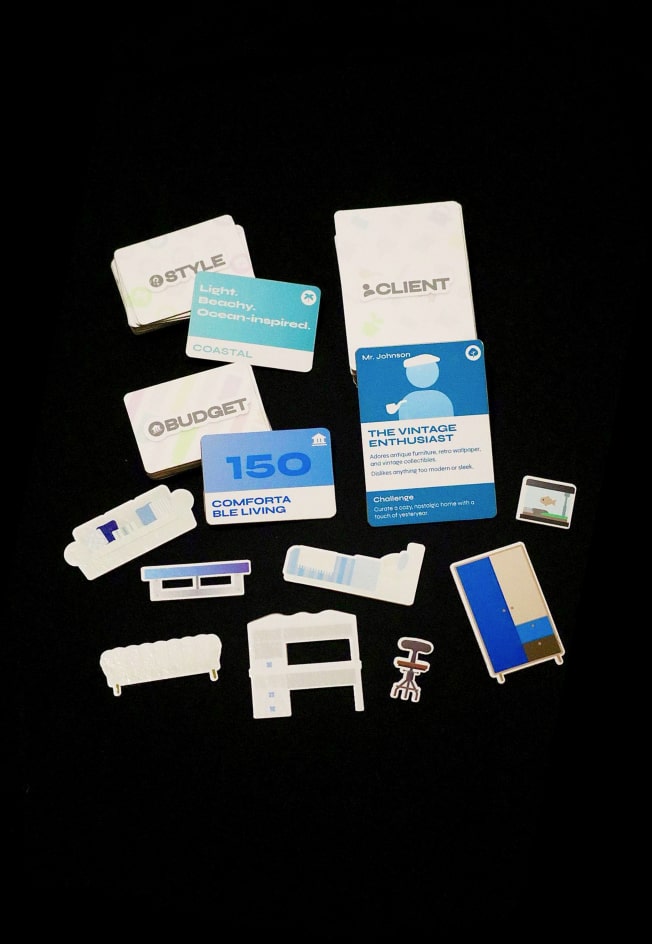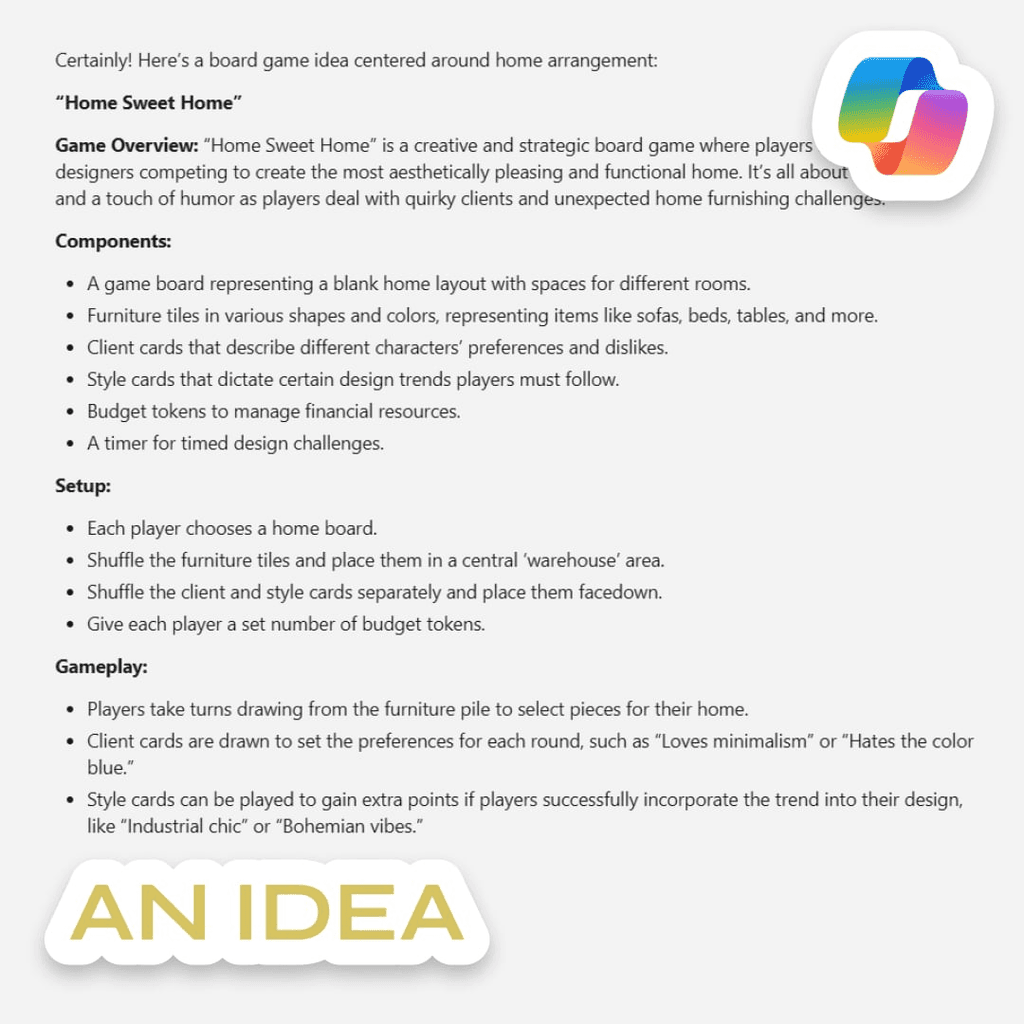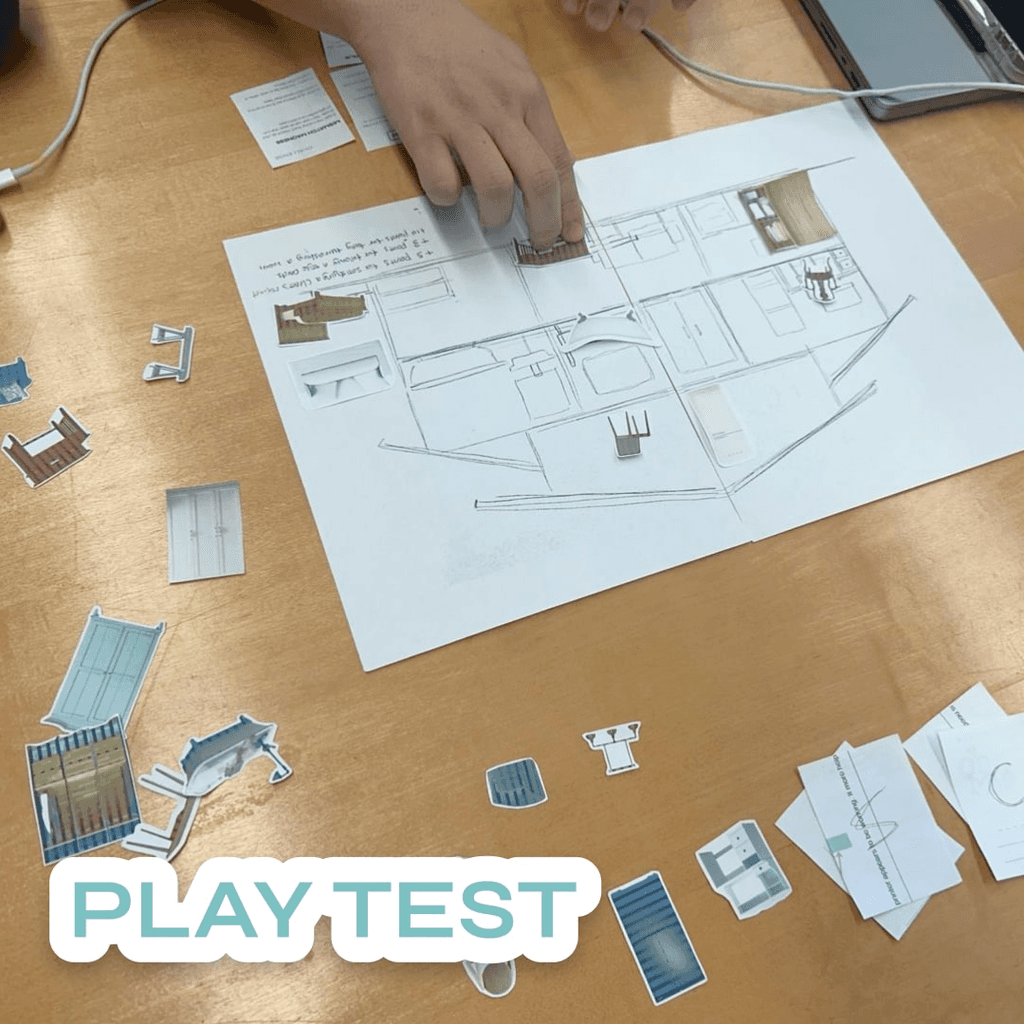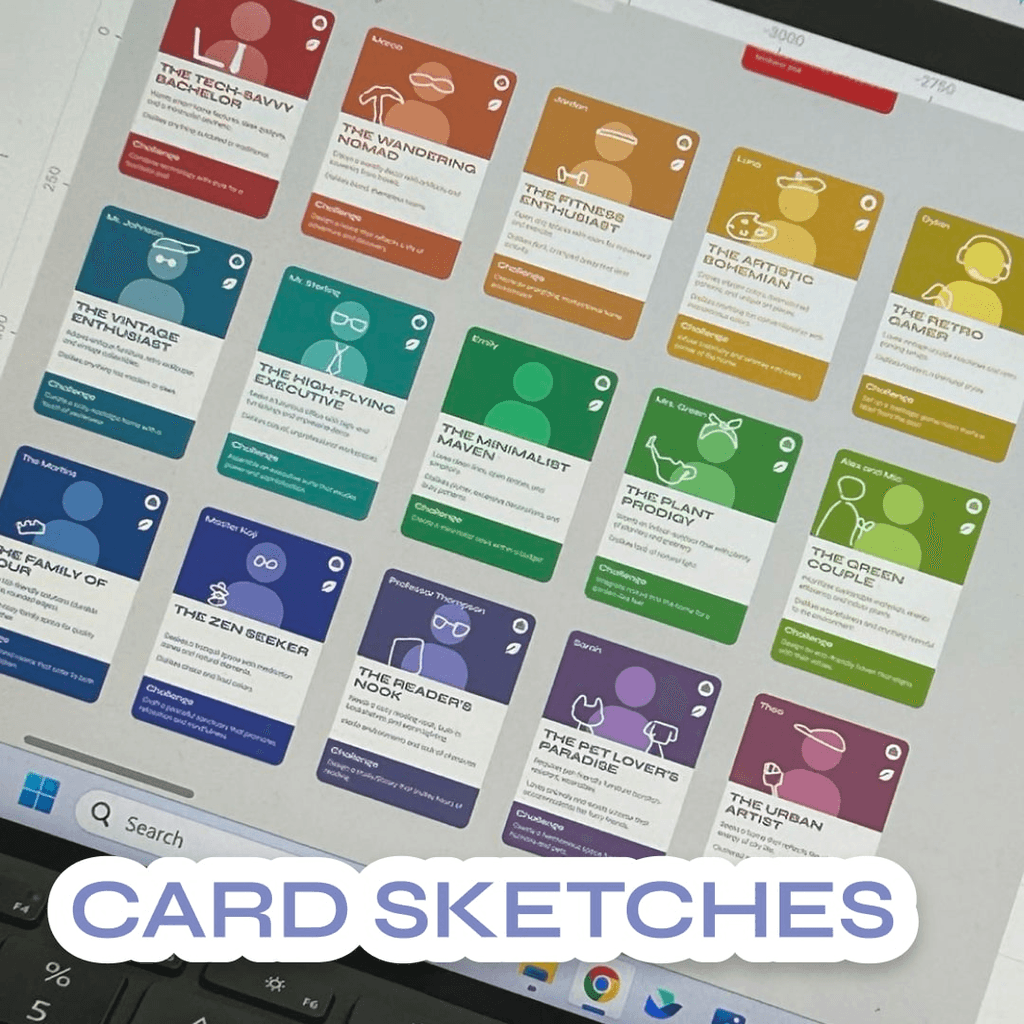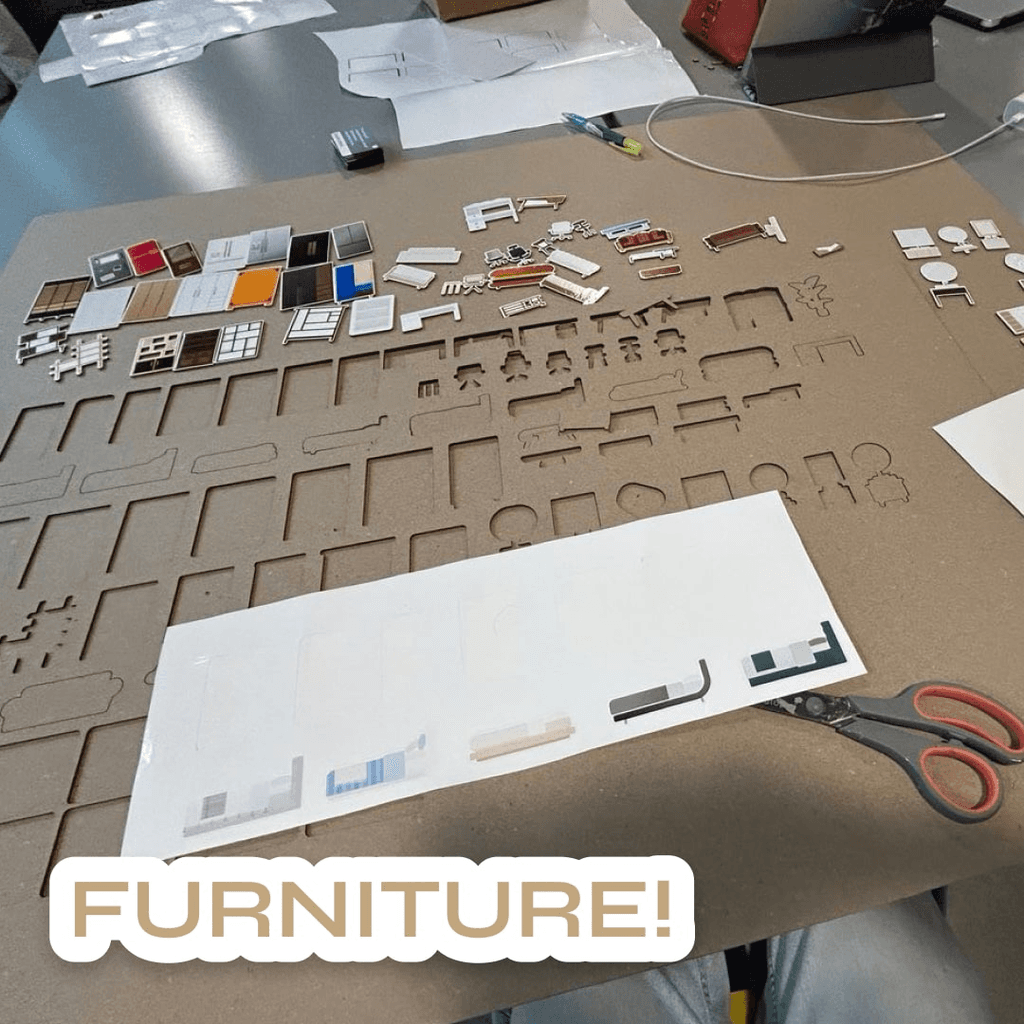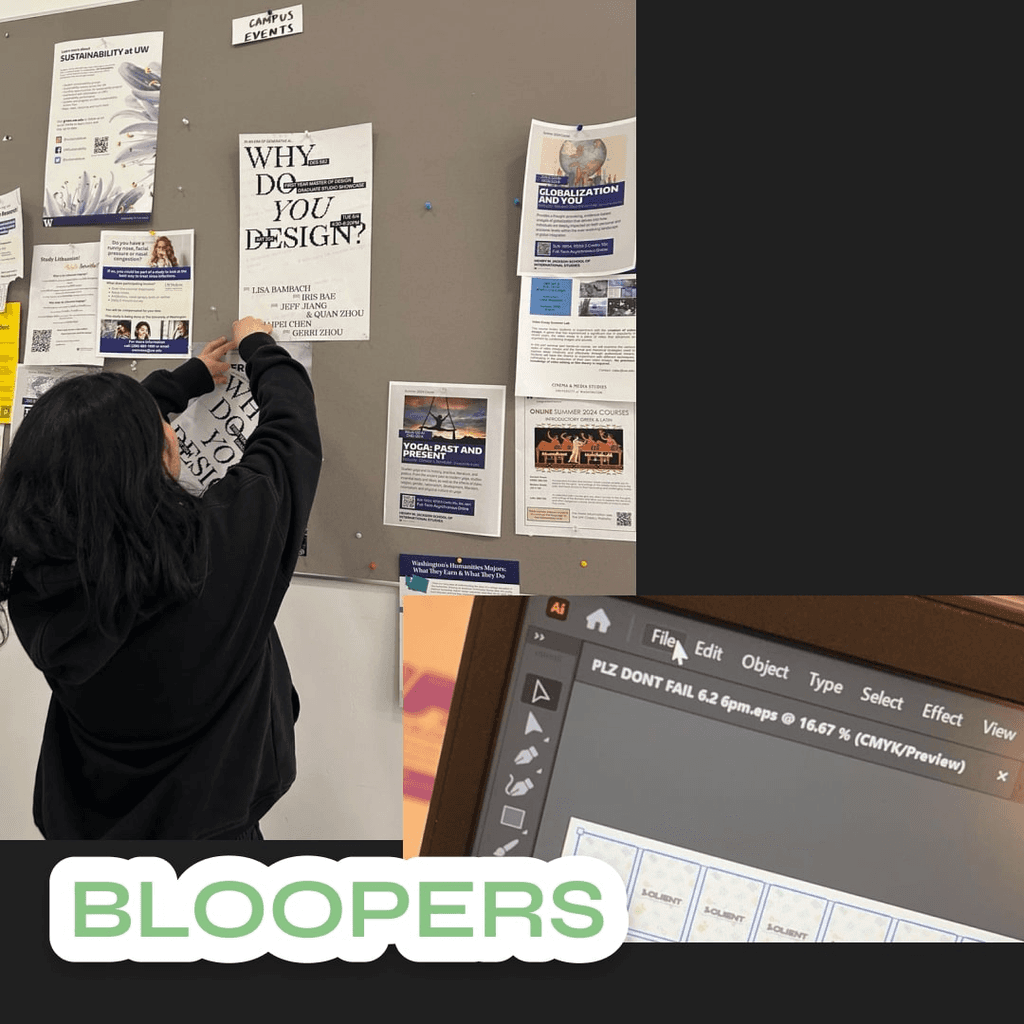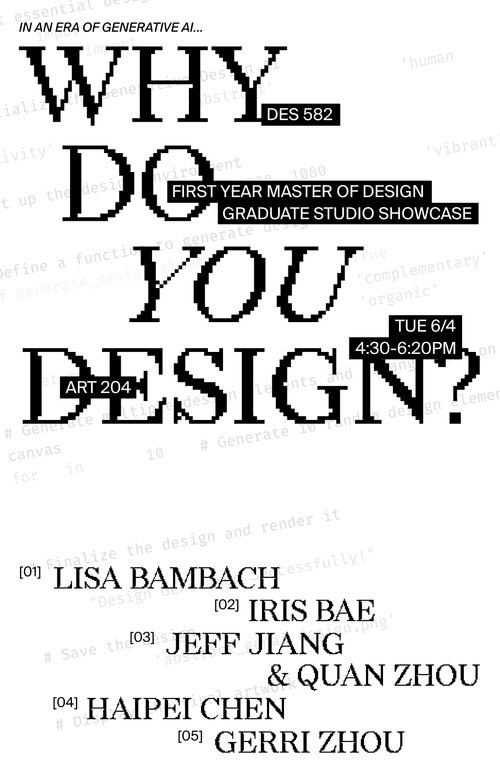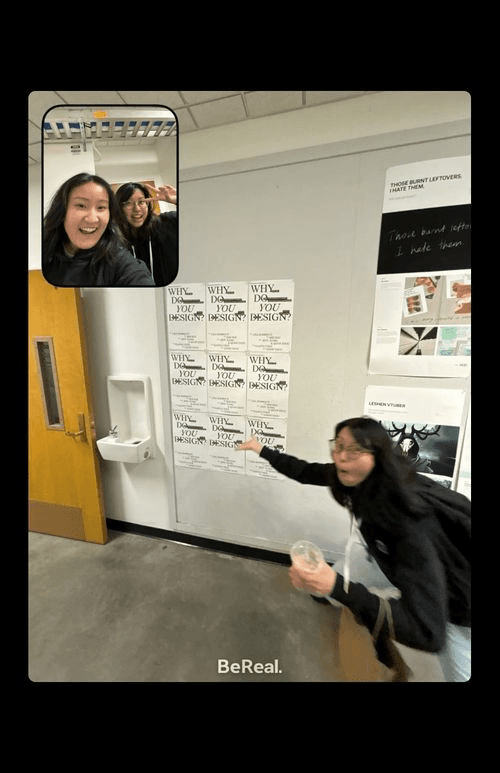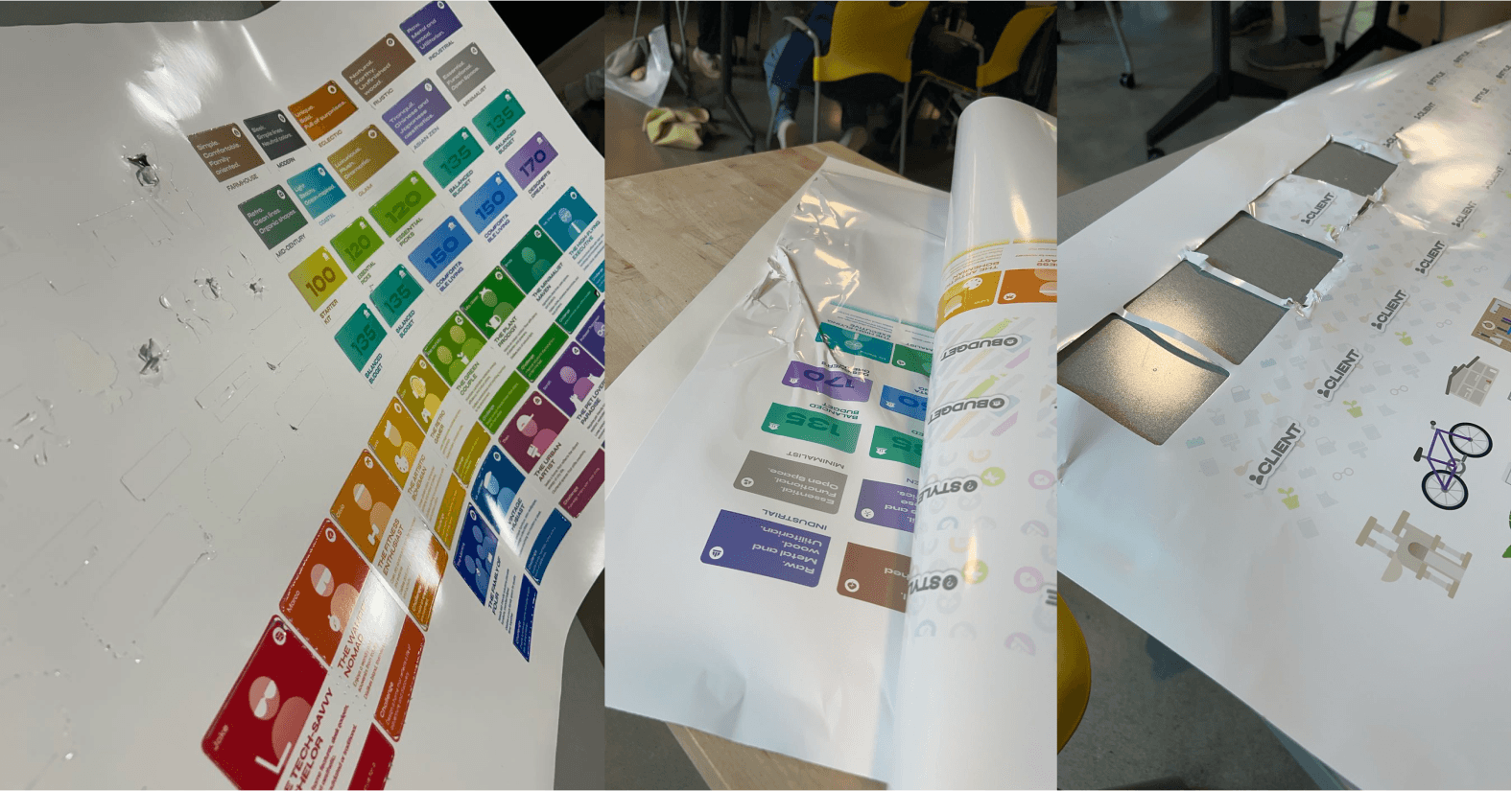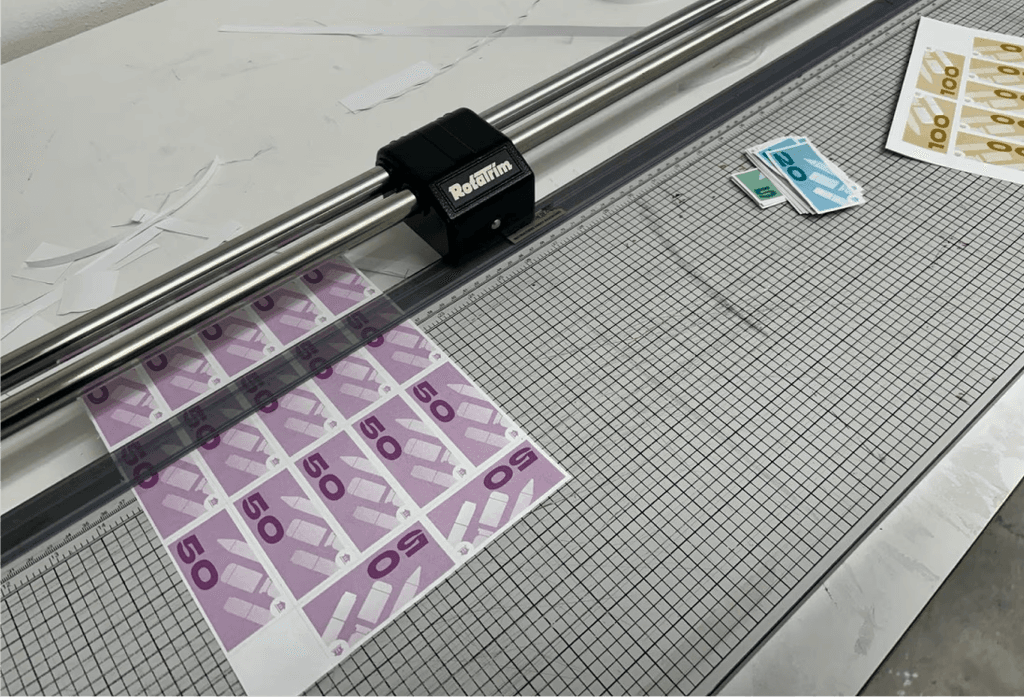
LOADING …
Home SWeet Home
Overview
A strategic game where players balance budget, client preferences, and design aesthetics to create the most captivating interior spaces.
*An exploration in generative AI collaboration: AI helped with mechanics, I designed visuals — no AI art used.
Tools
Figma
Illustrator
Laser Cutter
Vinyl Cutter
Team
Gerri Z.
*ChatGPT
*Microsoft Copilot
*Gemini
*FigJam
Duration
7 weeks
Try the game right here!
(Nutshell ver.)
Flip the cards to see your client, budget, and style! Drag the furniture to the board and decorate away!
Design x GenAi
I've always wanted to design a board game but struggled to find the right time and team, as coming up with compelling game mechanics isn't my strongest suit. With the emergence of generative AI, I saw an opportunity to explore using it as a 'teammate' to help brainstorm and organize game mechanics.
wHAT IS gENAI?
Here’s a quick excerpt from GenAI 101 that I created to educate myself and others about what GenAI is and how it works.
(As of April 2024)
What is Genai good for?
To better understand how I can use GenAI tools in my future design process, I tested 20 different popular GenAI tools across 4 areas: testing/evaluation, research, visual ideation, and UX ideation.
One of the biggest lessons I learned during this process: ChatGPT will make up the biggest lie with a straight face.
iNSIGHTS
I found that GenAI is most useful for quick inspiration and abstract ideas, rather than for concrete and accurate information gathering. It excels in the research and ideation stages of design, particularly for initial brainstorming and quick information retrieval. Additionally, it's great for writing tasks.
"Board game noob Designing A Board Game"
Game Concept Generation
To experiment using GenAI, I tried to use AI to come up with the board game concept.
AI Tools Used
ChatGPT
Microsoft Copilot
AI prompt
" I want to design a board game that is:
- Not too complicated
- Colorful in graphics
- Mostly paper based
Come up with 3 ideas for me, include name, rules, how many players, age range, duration for each game.
Draw out what the game would look like. "

Mishap Mansion - ChatGPT
In "Mishap Mansion", players become mischievous ghosts haunting a quirky mansion filled with humorous domestic disasters, like burning toasts in the kitchen or flying books in the library. The charmingly spooky ghosts are designed to appeal to all ages.

Home Sweet Home - Copilot
"Home Sweet Home" is a strategic board game where players act as interior designers, competing to create the most stylish and functional home while handling quirky clients and unexpected challenges.

Palette Parade - Copilot
"Palette Parade" is a family-friendly board game where players collect color cards to create the most compelling palette. Each turn, they draw, trade, or play action cards. The first to finish their palette or have the most points when the draw pile runs out wins.
These were concept images generated by the AIs.
These were sketches I created myself before generating the AI designs.
Insights
AI image generation: Good for proof of concept
Low effort concept image generation to explain concepts and ideas to others without the need to spend too long sketching. Good for initial ideations where you are not really considering the specifical visuals yet.
BUT, can constrain thinking so designers should be aware of it and stay away from building off entirely from ai images.
Ideation: Better to be as broad as you can with prompts
To avoid having the AI constrain it’s thinking within a prompt (for kids, for everyone), start with low requirements first (easy to play). It can be easy for AIs to catch on a word and generate within that word’s constraints and start building off of stereotypes (e.g. kids, funny).
Proof check ai ideations for originality
After conducting research, I chose not to continue developing the Mishap Mansion game because I found that there are already many similar games.
Initial Game test
Having never run or seen a game test before, I decided to consult Microsoft Copilot on what I should do and prepare (while also doing my own research), as well as what debriefing questions I should ask.
Below are the materials I prepared based on Copilot's suggestions, and all of the card contents were generated by Copilot.
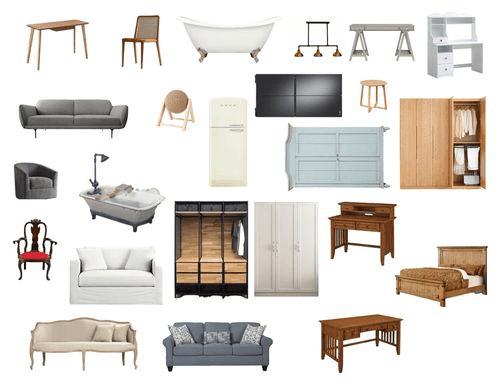
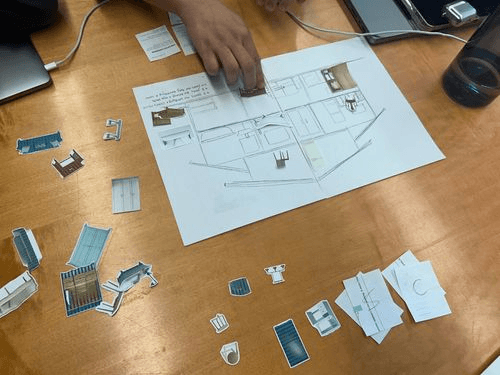
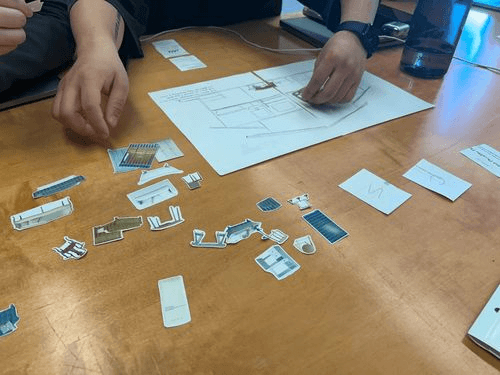
TESTING & REVISION
Prototype Feedback → Revision
During this phase, I primarily used GenAI for content generation, such as writing text for the cards, and avoided relying on it for any creative design decisions. Its writing saved me a tremendous amount of time, allowing me to focus on refining my design.
Design iterations
I continuously refined the designs to ensure all game components felt visually cohesive and aligned with my mood board.
Exhibit Marketing Materials
My classmate Haipei and I were responsible for creating the physical and digital marketing materials for our final design exhibition. Below are the Instagram stories and poster we created.
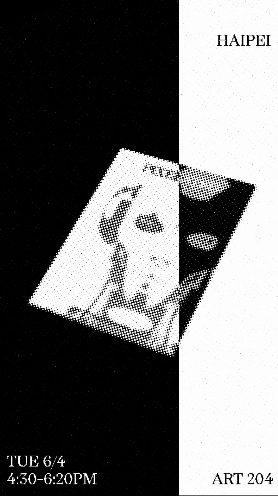
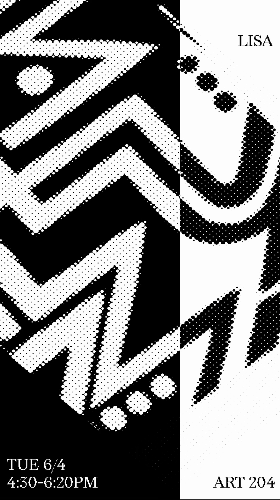
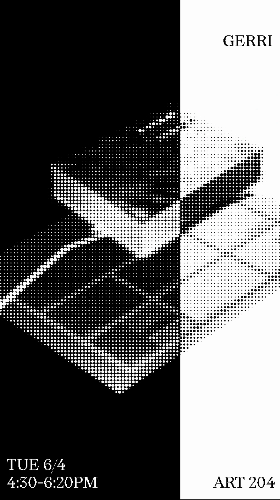
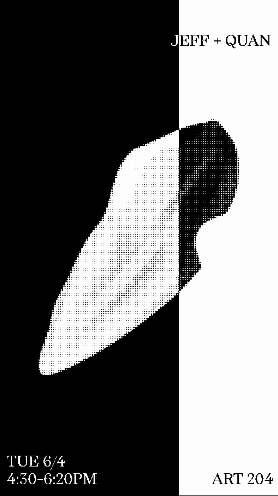

key takeaways
AI can save 80% of the time in creating game mechanics but still needs substantial human supervision to ensure coherence and originality. It generates fragments, not cohesive game rules, requiring human assembly. Biases also make oversight crucial; for example, when I asked AI to generate client cards, most featured men with stereotypical names.
ALWAYS
proof check AI ideations for originality!!
Possible future of the project?
The possibility of incorporating AI into the gameplay would be really intriguing. If GenAIs could be used to generate random prompts during the game, it could create infinite playability.
Bloopers👀
Vinyl cuter destroying my print :(
That took so much time away we don’t talk about it.
Had the chance to mass print money during this project (wink wink)
